Four Minutes of Two Years of Bone and Sickle
We’ve created a new video intro to the show, a smattering of excerpts from the first two years of Bone and Sickle podcast accompanied by custom visuals. Enjoy (and share if you can).
We’ve created a new video intro to the show, a smattering of excerpts from the first two years of Bone and Sickle podcast accompanied by custom visuals. Enjoy (and share if you can).
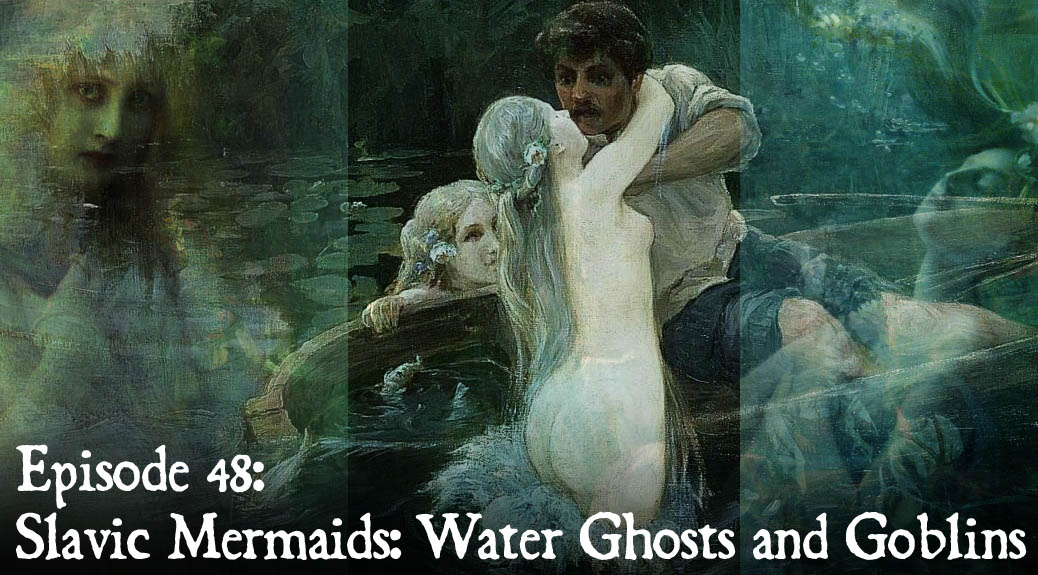
Podcast: Play in new window | Download (Duration: 46:08 — 42.2MB)
Subscribe: Apple Podcasts | Spotify | Android | Podchaser | RSS | More
Quite distinct from their Western equivalent, Slavic mermaids might better be described as water ghosts, as they are almost always the spirits of departed females, while their male equivalent takes the form of a water goblin or water sprite. The Russian word for mermaid is rusalka (rusalki pl.) and male creature is a vodyanoy. Similar words are used in other slavic languages, though the Czech water goblin is known as a vodnik.
The rusalki are found not only found in Russia, Ukraine, and Belarus, but also Poland, the Czech Republic, Slovakia, Serbia, Slovenia, and Bulgaria. And they’re honored with their own holiday, Rusalka Week, just now coming up in early June.
While they are usually active only at night, during Rusalka Week, they emerge in the daylight when they may be seen dancing, singing, or playing usually in groups. As they lack the fish tail of Western mermaids, they may also venture into forests and fields for such activities, but while in the water, they may also pull swimmers, fishermen or others near the water to watery deaths. We open the show with a clip from Mermaid: Lake of the Dead, a 2018 Russian horror film about a rusalka, which depicts the creature in this malevolent aspect.
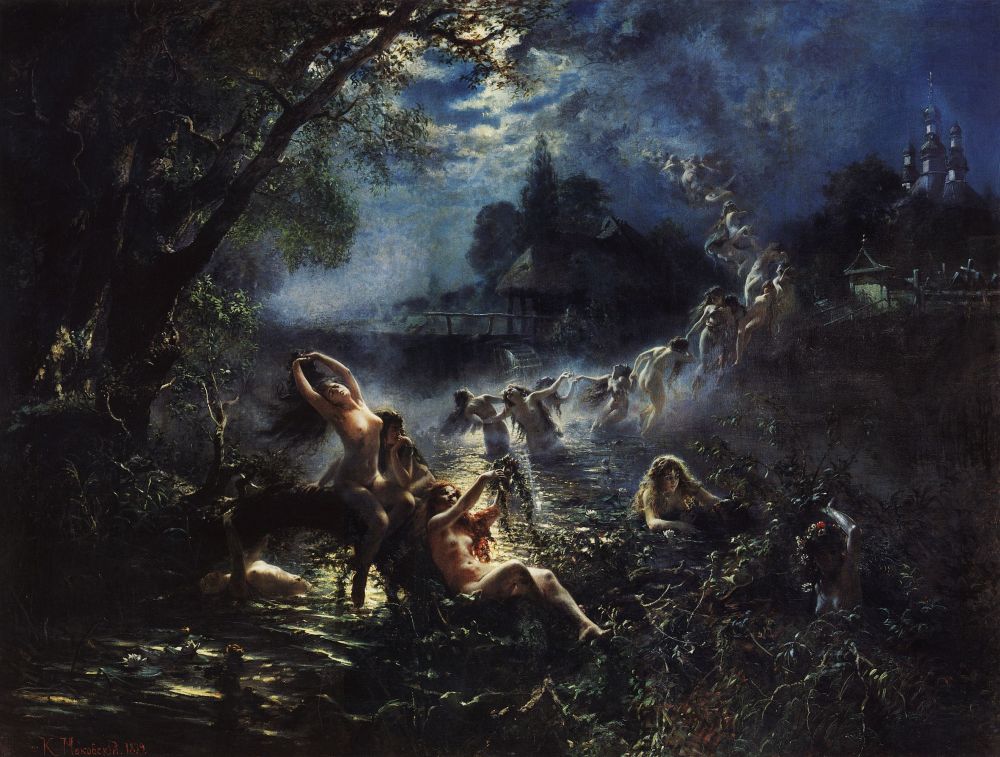
Not just any woman who dies will become a rusalka. Typically, she would have died by violence, suicide, or sudden accident, particularly drowning. Often these deaths are related to misfortunes in love, rejection by lovers, or suicides due to unwanted pregnancies. Because of this, the rusalka is particularly focused on capturing men with no interest in attacking adult females. Men who fall prey to them are either believed drowned or may live with them in a sort of underwater spirit limbo in their richly appointed palaces of crystal, gold, and silver. Occasionally, their would-be victims may overcome them by the power of the cross, or in rare cases, they may even be domesticated into mortal life (with varying success). Mrs. Karswell reads several typical and atypical tales describing the interactions of rusalki and men, ones collected from informants in turn-of-the-century studies by Russian ethnographers
While rusalki are most interested in men, they may sometimes capture girls and boys to be kept as the children they failed to have in life. Infants may also become rusalki if they die unbaptized, and will wander the earth in that form for seven years seeking someone who might free them by performing a christening. After that, like other rusalki, they remain in that undying form until the end of the world.
Prior to the 19th century, it’s not clear the rusalki were always regarded as the ghosts of unfortunate females. Instead, they seemed to play some role in connection to fertility. This is particularly clear in Ukraine, where the rusalki (or creatures nearly the same) are called mavka and a figure called Kostromo is both the center of early spring fertility rites and known the first female to become a mavka. “Mavka” is also the name of under which a contemporary Ukranian musiican performs songs composed, in what she calls “the language of mermaids.” We hear a clip from one of her performances.
Rusalia Week, or Rusalia, is tied to the date of Pentecost or Whitsunday. It’s also known as “Green Christmas” or “Green Holiday” as homes and churches are decorated in greenery, and celebrations take place in birch forests where young women and girls wear crowns woven from flowers and plants. It takes place either 40 or 50 days after Easter, and the biggest celebrations take place on Semik (from the Russian word for “seven,”) the seventh Thursday after Easter, which is June 4 this year. We describe some rather curious rituals around birch trees involving symbolic dolls used to represent the rusalka, and how these are understood to symbolically free the restive spirits from their existence as rusalki.

Rusalia celebrations embrace both aspects of the rusalki — their post 19th-century incarnation as dangerous ghosts, and an older pagan understanding of these beings as bringers of regenerative moisture and fertility of crops. We also hear a few accounts describing tried and true methods for evading rusalki attacks particularly common during this period.
The rusalka folklore has been adapted into a number of Slavic productions over the years. We hear of a rusalka in Russian novelist, poet, and dramatist Nikolai Gogol’s 1831 collection of stories Evenings on a Farm Near Dikanka, which served as the basis of a loopy but fun Russian TV series, Gogol, from which we hear a clip. ( A rusalka briefly appears also in Gogol’s Viy, adapted into a cult classic film of 1967, Viy Spirit of Evil, from which we hear a clip.
Rusalka folklore has been a popular subject for opera. Alexander Dargomyzhsky’s Rusalka, which premiered in 1856 was based on a nearly finished verse drama by Alexander Pushkin. Its tragic tale involves not only a a vengeful adult rusalka, but also a dangerous child rusalka, and a madman who believes he is a raven.
The better known Rusalka opera, which premiered in 1900, is by Czech composer Antonín Dvořák. Best known for its lovesick aria “Song to the Moon” in the first act, its story draws partly on Slavic folklore and partly on Hans Christian Andersen’s “The Little Mermaid” to tell its equally tragic tale. A vodnik or “water goblin” is cast as the father of the character given the name Rusalka, and the opera also features the witch Jezibaba, the Czech equivalent to Baba Yaga.
Dvořák liked to say the opera was inspired by fairy tales of popular 19th-century poet Karel Erben, namely his 1853 collection Kytice, which means “bouquet”. (The book was given a particularly sumptuous treatment int the 2000 adaptation known in English as Wild Flowers.) While in fact the opera borrows nothing directly from Erben’s stories, Dvořák did more explicitly embrace one of Erben’s pieces in his symphonic poem known in English as “The Water Goblin.” Mrs. Karswell reads for us the climactic scenes of this tale, which is gruesome even by Bone and Sickle standards.
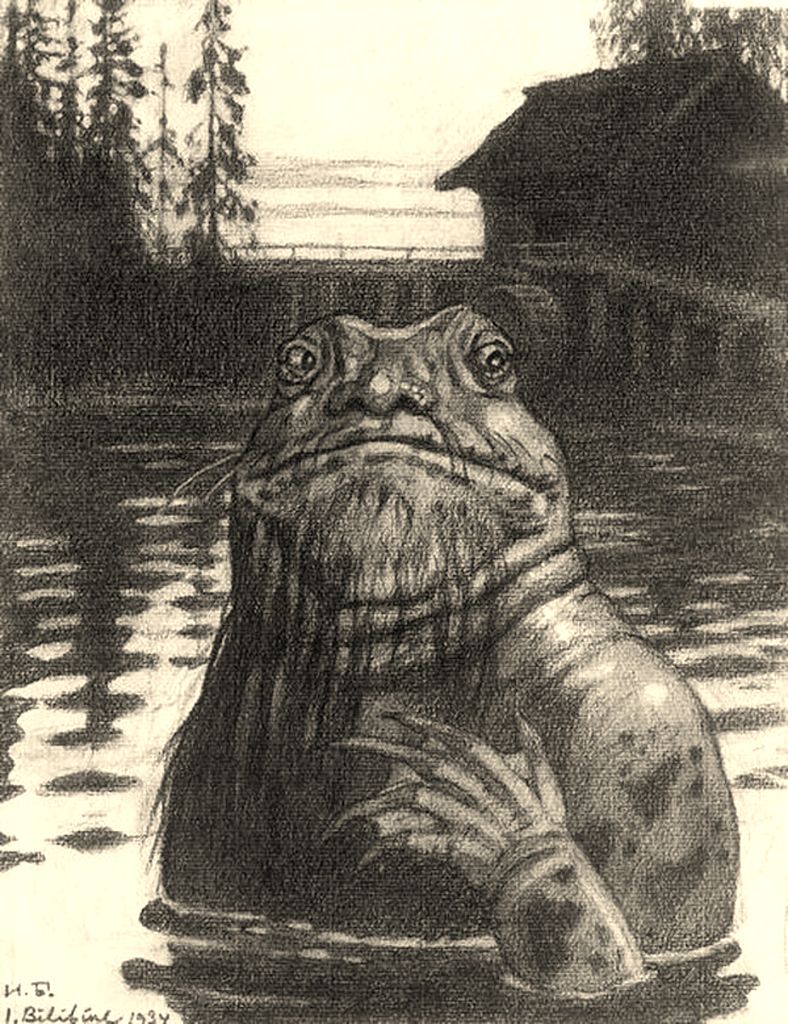
After a bit of further discussion of the vodnik and its Russian near-equivalent, the vodyanoy, we address the elephant in the room — the fact that the rusalki are said to tickle men to death. I share a few comments on reference to historic tickle torture, as well as some anecdotes from the much more amusing history of death by laughter.
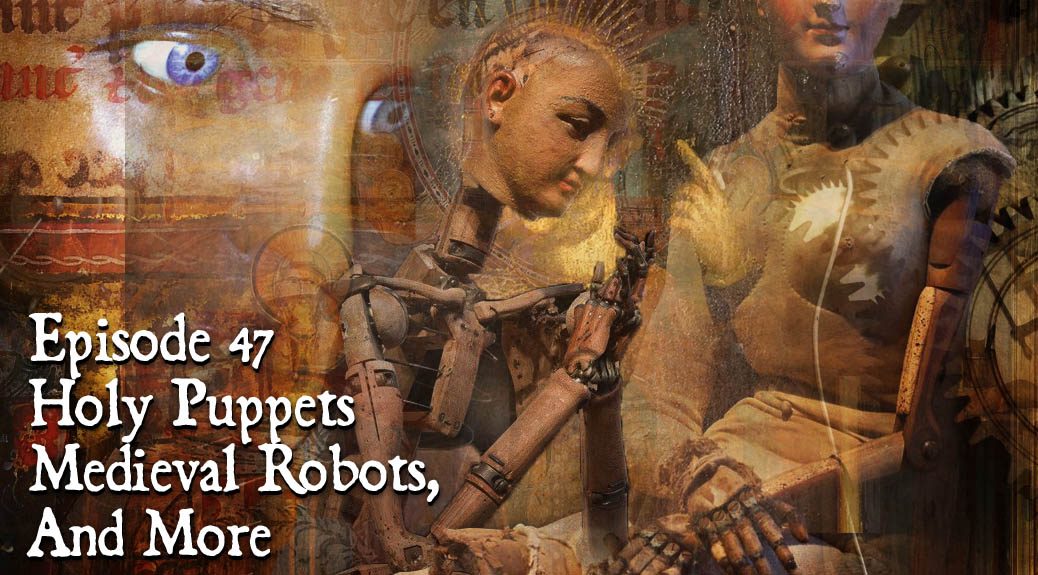
Podcast: Play in new window | Download (Duration: 47:21 — 54.2MB)
Subscribe: Apple Podcasts | Spotify | Android | Podchaser | RSS | More
This episode looks at puppets given life through magical or mechanical means, holy puppets of the Catholic Church, medieval robots, an early automata of gothic literature, some related films, and an Alpine sex puppet that only puts up with so much.
We begin at the end of Carolo Collodi’s original Pinocchio story, or at least the end of the story’s first draft as serialized by the Italian children’s magazine, Giornale per i bambini in 1881. As is our way, we examine some of the darker elements of the tale that never made it into the 1940 Disney film, (though we do hear a snippet of one particularly dark scene from that film.)
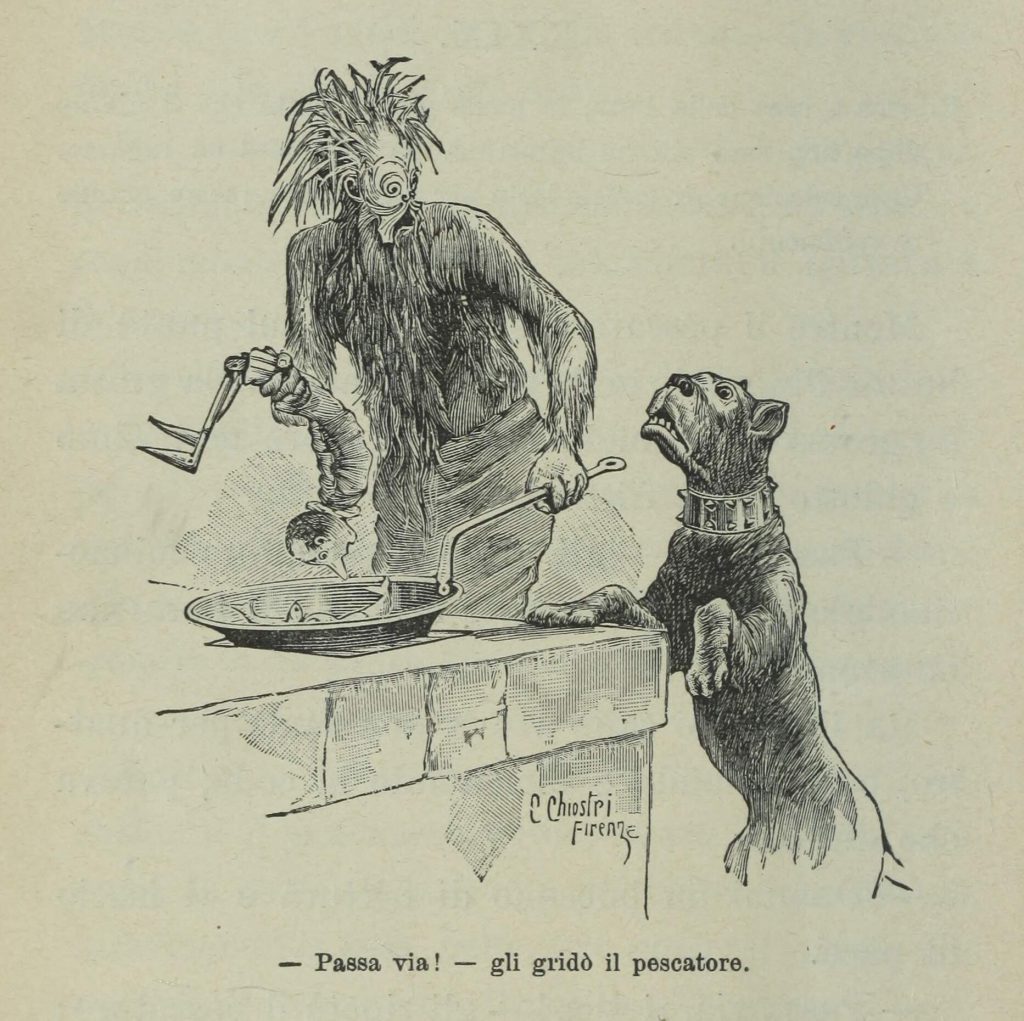
Long before Collodi imagined his marionette, the medieval Church made use of puppets, or jointed figures, that could be manipulated to enact Christ’s Passion during Easter week. Along with jointed shoulders allowing a figure of the Savior to be naturalistically unpinned from the cross, many of these puppets featured joints at the knees, elbows, and hips; some had rotating heads, and some fingers jointed to match each skeletal bone. Others were rigged to bleed, roll their eyes, or even appear to speak. We hear a report of a particularly bizarre method used to simulate tears in one figure from Germany as well as some interesting trickery resorted to by Bernese monks in the 1600s.
One of the most famous of these figures, especially because of its strangely lifelike skin, is the Christ of Burgos, Spain. Mrs. Karswell reads for us a passage mentioning a particularly gruesome legend associated with the figure from French poet and writer Théophile Gautier’s 1843 book, Wanderings in Spain.
Another famed Christ puppet was the 15th-century Rood of Grace once housed at a now ruined abbey in the town of Boxley in Kent. A number of miraculous abilities were attributed to this figure, which was attacked (literally) by Protestant Reformers as an example of Catholic chicanery. We hear of its unseemly end and an equally unseemly ballad by which Cromwell’s men mocked the figure in bawdy verse.
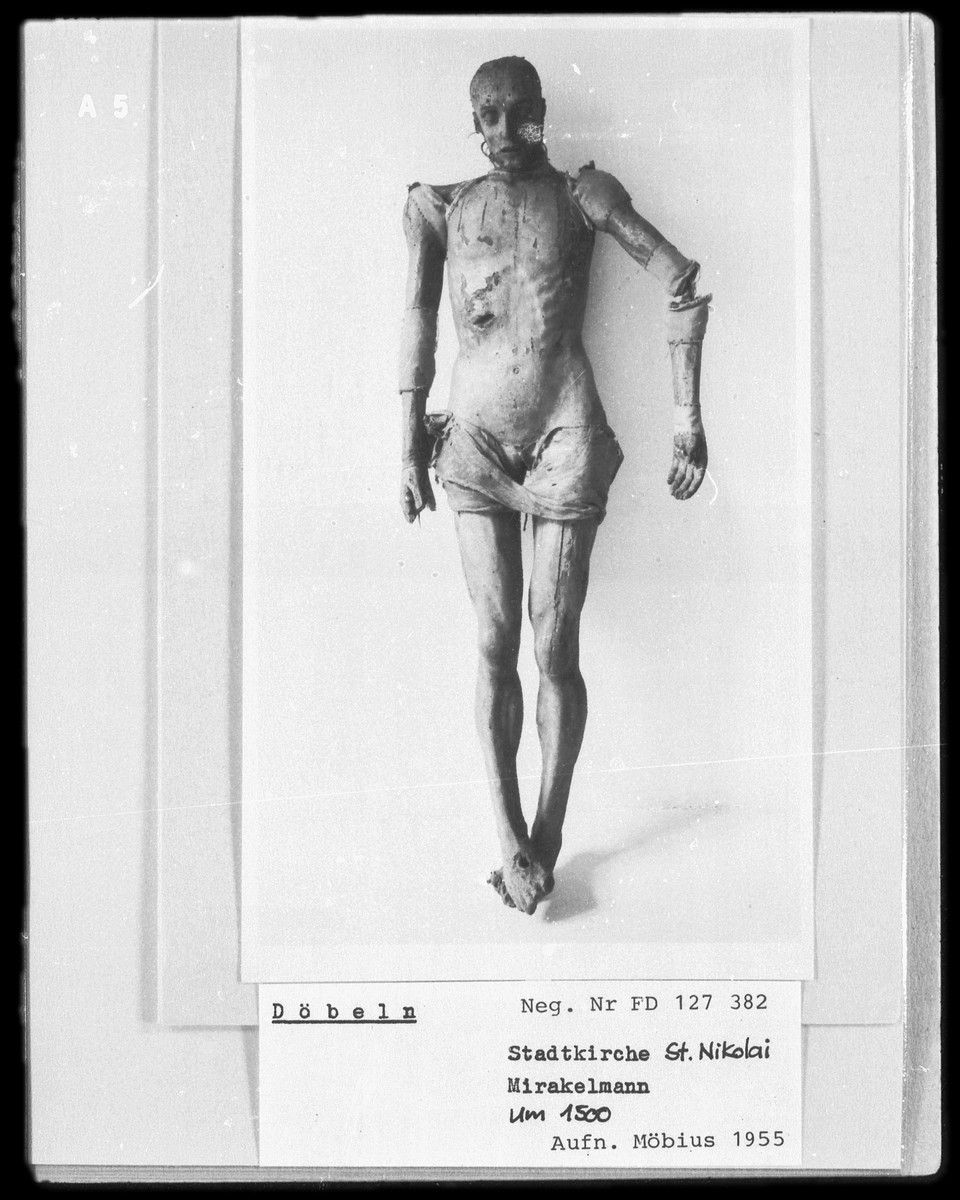
Spain’s particularly rich heritage of mechanically animated holy figures owes much to Muslim innovations there. It was from here that geared devices such as astrolabes entered the West, and here that that weight-driven clocks were employed almost two centuries before their use elsewhere in Europe. We hear a few examples of Eastern travelers tails of automated wonders (and automata) from the first century, including one describing the remarkable Palace of the Tree in Baghdad.
Such real-world (if a bit mythologized) accounts were an inspiration in the medieval West, particularly in the Anglo-Norman epic poems or Romances of the 13th century. We hear some passages describing the mechanical marvel’s of the fairy Esclarmonde’s bedhcamber from the Romance of Escanor by d’Amiens and of a confronation between the knight Huon de Bordeaux and a pair of giant men of copper armed with flails.
Esclamonde is an interesting figure as she is sometimes said to have been tutored by Virgil, the ancient Roman poet, who in medieval legends had become something of a wizard. There are dozens of tales of Virgil crafting of metal assorted mechanical or magical wonders: flies, horses, human figures, and a serpent (or lion) which predates the legends associated with the Bocca della Verità (mouth of truth) adored by tourists in Rome (and described by Cary Grant in the clip we hear from the 1953 film Roman Holiday). Virgil’s enchanted castle in Naples was also said to be guarded by men of copper, armed with flails — as in the Norman poem. And we hear of a strange ritual whereby the wizard was said to have attempted to cheat death, one involving a bit of butchery and grievous mistakes.
We also look at the 13th century tale known as the “Prose Lancelot” as well as Chrétien de Troyes’ telling of the Perceval legend, both from the same era and both featuring animated men or beasts of metal with which the knights must grapple. In these cases, however, the figures are animated by demons who must also be defeated.
Often these medieval robots would be presented in scenes depicting underground treasure-houses or tombs. We hear one such story told in a William of Malmesbury’s chronicle Deeds of the Kings of the English, and another from the French Romance of Eneas.
The legends of Tristan and Isolde also furnishes us a similar example in a 12th-century version by Thomas of Britain. It features Tristan romancing a mechanical replica of his beloved Isolde, who resides in his secret “Hall of Images” along with a mechanical maidservant and mechanical dog.
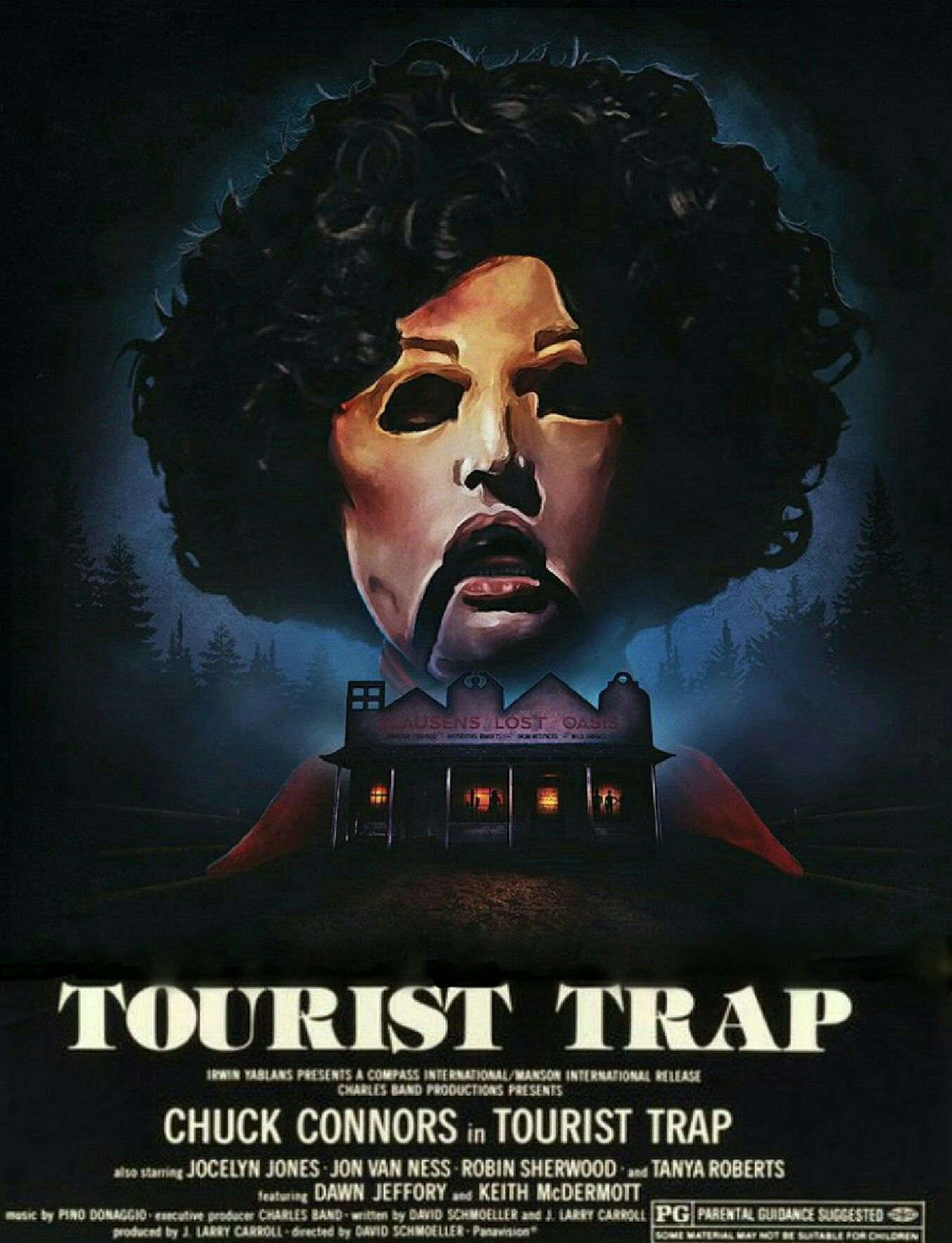
The psychological morbidity of Tristan making out with a lost lover is reflected in a few bizarre horror films from the 1970s. We discuss 1979’s Tourist Trap and 1971’s Vincent Price vehicle, The Abominable Dr. Phibes, both of which feature automata. We also hear a bit about the 19th-century German writer E.T.A. Hoffman’s short story “The Sandman,” which features a mechanical woman who becomes the object of the narrator’s crazed obsession. You can read this delightfully dark and invenntive story in English here.
Our final lifelike puppet comes from the Alpine legend of the Sennentunschi or doll used (erotically) by the lonely herdsmen (or “Sennen”) during their long seasonal isolation on remote mountain pastures. Created out of rags, straw, and other odds and ends — initially out of boredom and mischief — the doll is brought to life by an irreverent “baptism,” and after serving the herdsmen enacts a gruesome revenge for the indignities it suffers at their hands. We hear a clip from the entertaining Swiss film of 2010, Sennentunschi, and hear of an actual specimen of a Sennentunschi doll (or one assumed to serve this function, sans supernatural animation) discovered in 1978.
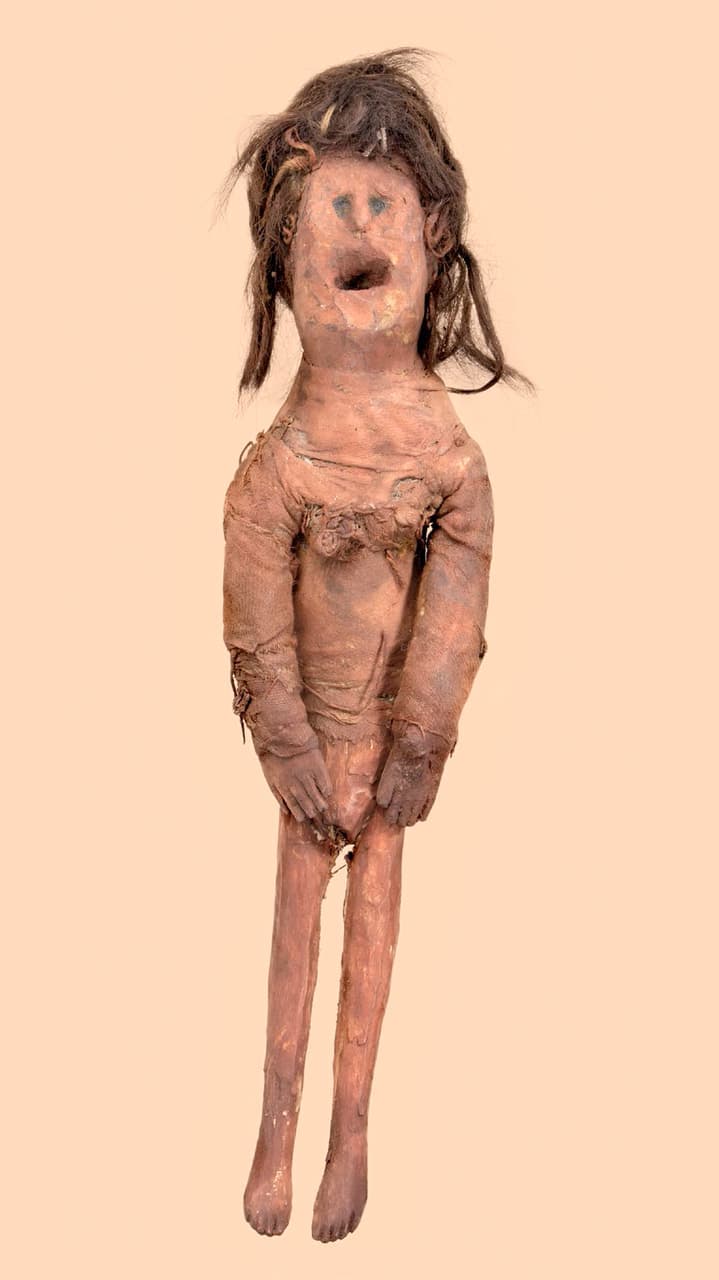
There’s a parallel in the Sennentunschi story to the Czech legend of a childless couple adopting a log, which comes to life, which served as the basis for the 2000 film, Little Otik, by stop-motion master director Jan Švankmajer (We hear a clip from this too).
The show closes with a look at an unlikely connection between our topic and Alvin Schwartz’s juvenile folklore classic Scary Stories to Tell in the Dark and a tragic tail connected to the 1940 production of Pinocchio featuring the artist formerly known as Ukulele Ike,
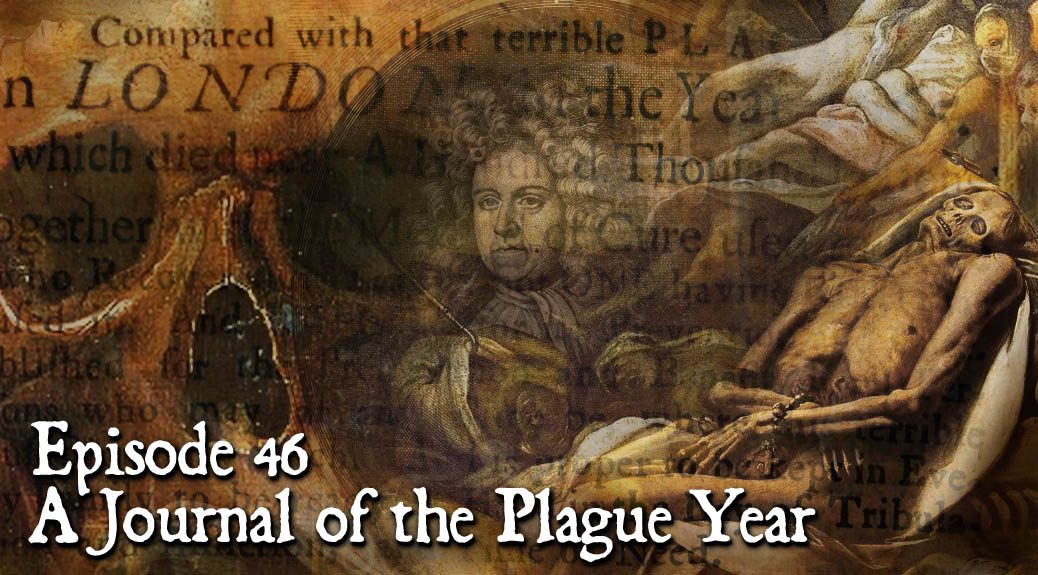
Podcast: Play in new window | Download (Duration: 44:39 — 51.1MB)
Subscribe: Apple Podcasts | Spotify | Android | Podchaser | RSS | More
The Great Plague of London of 1665 to 1666 is vividly portrayed in Daniel Defoe’s A Journal of the Plague Year, which we’ll be examining closely in this episode. As the text is quite entertaining (much more so than his better known Robison Crusoe) we’ll be hearing more extensive quotes from the material than usual, delivered as usual by our diligent reader Mrs. Karswell.
We begin with a look at the presumed connection between the nursery rhyme, “Ring Around the Rosie” and the Black Death. Though the facts here may not satisfy our desire for macabre secrets hidden in plain sight, we will find evidence for something similar in a children’s song we review at the show’s conclusion. We hear a snippet of the song as rendered in the game Dead Space.
Defoe’s book occupies a strange place between history and historical fiction. As Defoe was 5 years old in 1655 and the book was published in 1722, the story is technically a work of fiction. However, the narrative is an excellent window into contemporary perceptions of the tragedy as well as treasure house of factual information. Characters within the story are nearly all actual individuals. Particular events described have widely been corroborated in contemporaneous accounts. Particular dates and locations are also meticulously anchored in reality – so much so, that scholars have frequently treated it as a contemporaneous source. Hints given in the text suggest that Defoe was in fact telling the story of his uncle, Henry Foe, who lived through the Great Plague in London and shared a profession (saddler) with the story’s narrator.
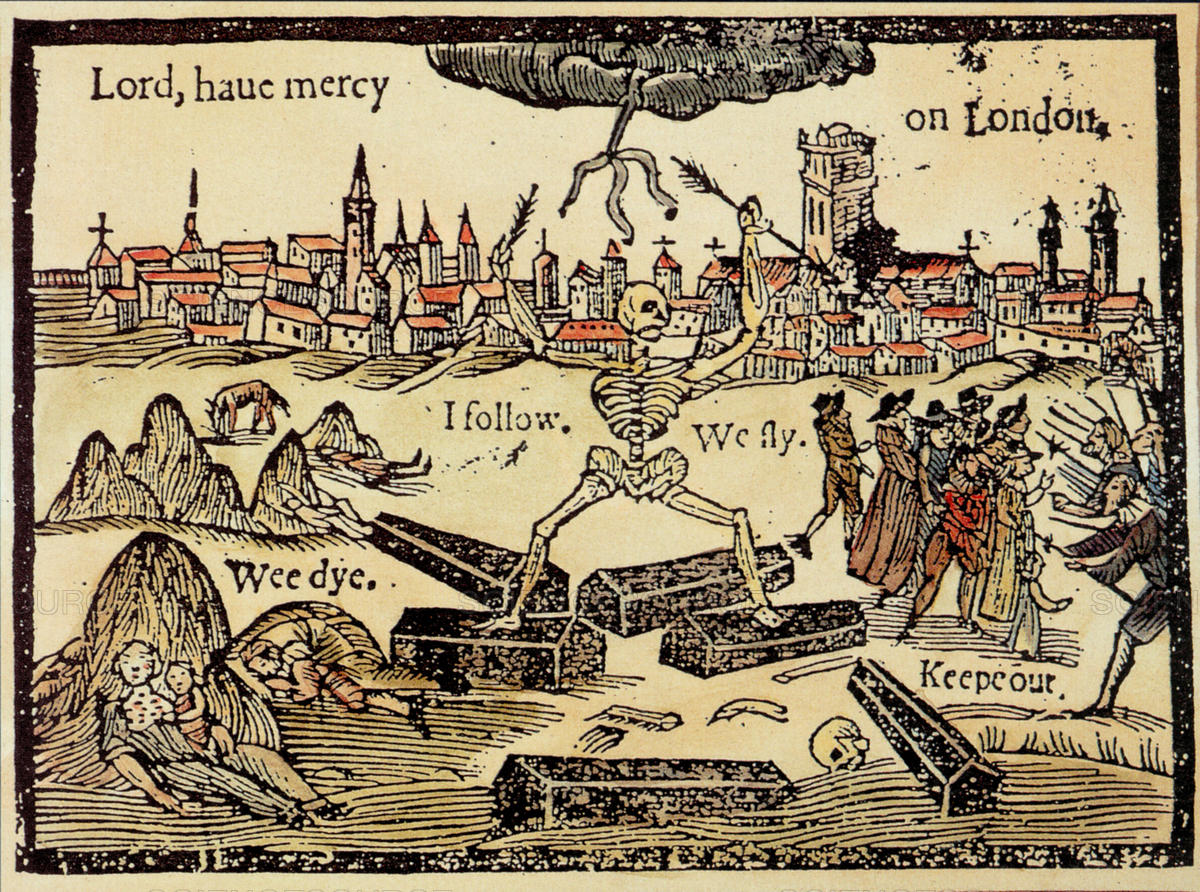
Part of what makes the book so fascinating is Defoe’s meticulous cataloging of the way in which Londoners reacted to (and anticipated) the plague in terms of omens and astrological predictions and biblical prophecies articulated in pamphlets, broadsheets, and almanacs of the day. Here, the sighting of two comets over England as well as the biblical and numeric significance of the approaching year 1666 play a large role. He also describes predictions of doom were also shared by visionaries and eccentric personalities on the city’s streets, such as those shared by the Quaker Solomon Eccles, known to Londoners as “Solomon Eagle,” a self-styled prophet who roamed the city with a pot of burning coals atop his head.

Defoe’s narrative also relishes some detail on the symptoms of the disease, the madness it brought upon those suffering from these symptoms, and the dreadful treatments offered by contemporary doctors. We hear a number of passages describing these aspects, including horrific accounts of patient suicides and a lethal kiss offered by an insane victim of the sickness.
Also included in A Journal are extensive quotes from municipal edicts stipulating how the emergency was to be addressed. From these descriptions we learn of the “Searchers of the Dead,” old women who roamed the city with red wands, prodding at corpses to determine which had succumbed to the disease, and of the watchmen posted at the doors of quarantined homes to ensure that those within (sick and healthy residents alike) remained incarcerated until the afflicted either recovered or was carted to the plague pits. We also hear how these measures were defeated by more devious citizens.
Corpses, which were placed outside homes (or later those that simply fell dead in the streets), were picked up by “dead carts” preceded by a bell ringer. Pickups and burial in the plague pits were only performed at night to avoid further distressing the citizenry. He hear a particularly dramatic description of the narrator’s visit to one of these pits and an encounter with a grieving loved one there and his rough treatment by cynical drunkards in a tavern to which he retreats.
Unfortunately for Londoner’s the Great Plague was followed by the Great Fire of London in 1666. While the death count from the plague had already begun to drop sometime before the fire, it was nonetheless commonly believed that this disaster somehow put an end to the epidemic or even, in some way, purified the city of its sickness. We hear a clip of the song “London’s Burning,” commonly associated with the 1666 fire despite its mentioning anachronistic “engines” sent to extinguish the flames.
Defoe’s Journal also includes another story related to a song. It’s his retelling of a legend circulating in London at the time inspired by a story from Vienna. It relates how a piper, a tavern entertainer, becomes grievously intoxicated and while passed out, is picked up by one of the dead carts and is deposited, while still unconscious, in a plague pit — thankfully awakening before earth is shoveled in. The story was eventually turned into the Viennese song “Oh du lieber Augustin,” (Oh, my dear Augustine) in the 1800s, and attributed to Markus Augustin, a minstrel and piper, who lived through the Great Plague of Vienna in 1679. While it’s set to the innocent-sounding melody of “Have You Ever Seen a Lassie,” the grim lyric tells how the piper has lost everything to the plague, like the city of Vienna itself. But its cheery tune and the fact that the singer has lived to tell his story has made it an anthem of survival for the city — and popular song throughout German-speaking lands. We hear a snippet of the song rendered in period-appropriate style by Ensemble Unisonos.
We end the show with a custom mashup of “Oh du lieber Augustin” and the curiously similar dead-cart scene from Monty Python and the Holy Grail.
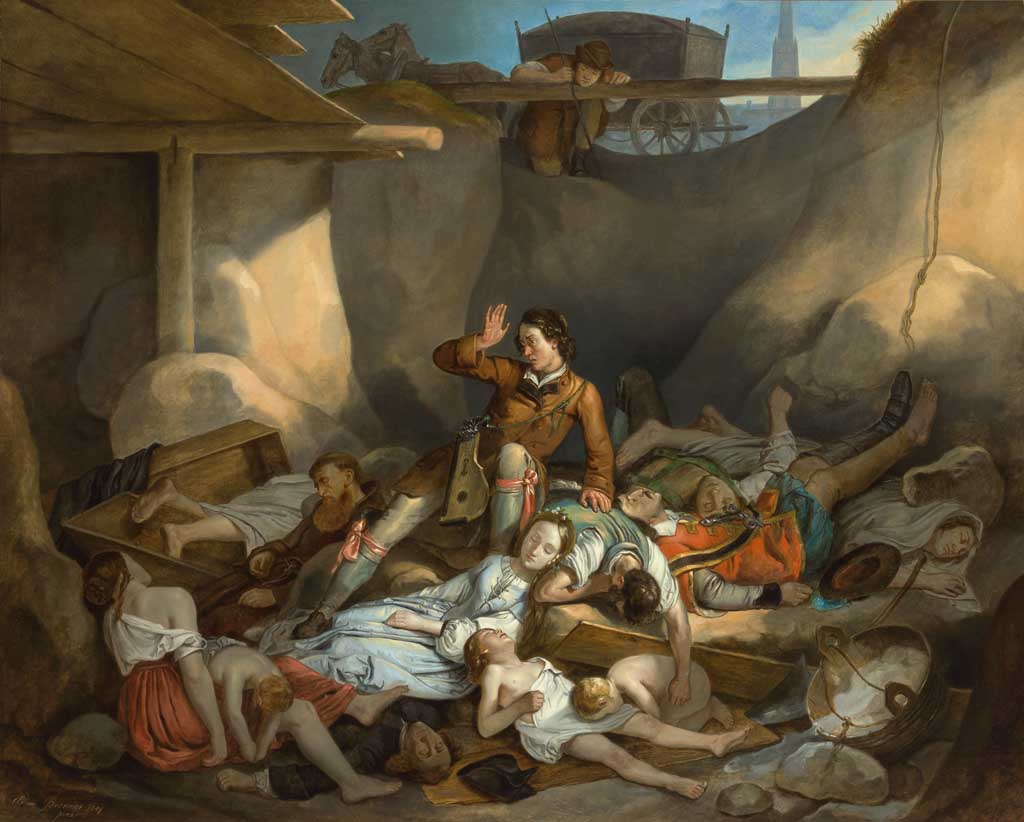
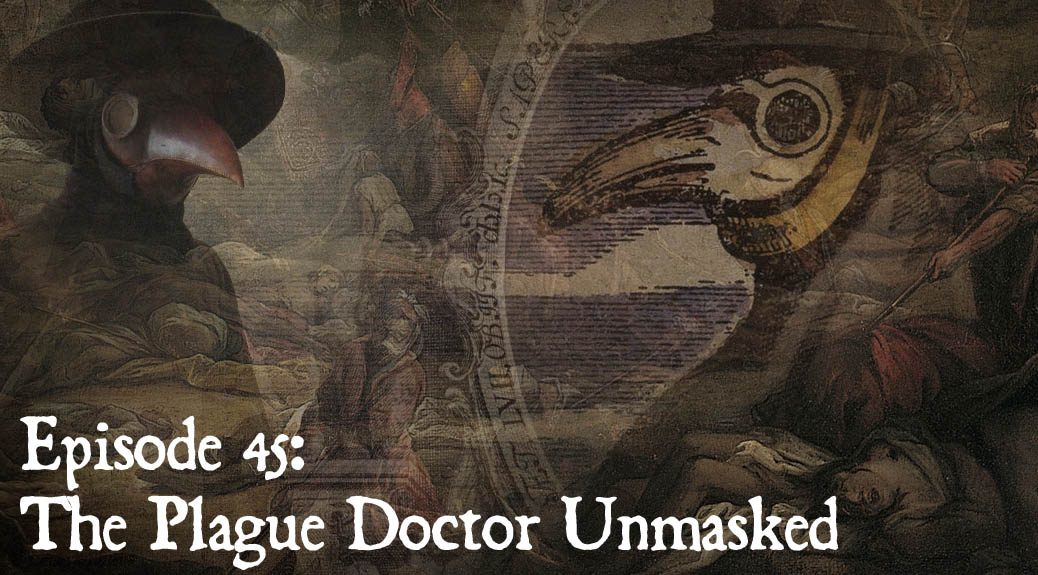
Podcast: Play in new window | Download (Duration: 46:50 — 53.6MB)
Subscribe: Apple Podcasts | Spotify | Android | Podchaser | RSS | More
The figure of the masked plague doctor is an object of intense fascination but also the subject of much misinformation. This episode sorts things out while seeking particular evidence for such handsomely dressed character in the historical record.
We begin with a few clips from horror films in which plague doctors figure, including the 2008 film The Sick House in which the spirit of a plague doctor menaces an archeologist, and the 2019 film The Cleansing in which a malevolent bird-masked “Cleanser” stalks through 14th-century Wales.
As most listeners are somewhat familiar with the plague mask and its presumed function, we get that out of the way first, noting the mask’s connection to the antique belief in miasma, or disease-carrying air as the cause of the plague and other ailments. We also clear up the misunderstanding that the plague doctor is a medieval character (since he only appears in the 17th century).
His first appearance is in a German broadsheet from 1655, in which the crow-like character identified as “Dr. Beak” and lampooned (along with doctors in general) for being greedy as carrion crows. As this image was copied and recopied for centuries, it raises the question as to whether the birdlike mask was in fact drawn from life or created strictly in the service of this original broadsheet’s metaphor.
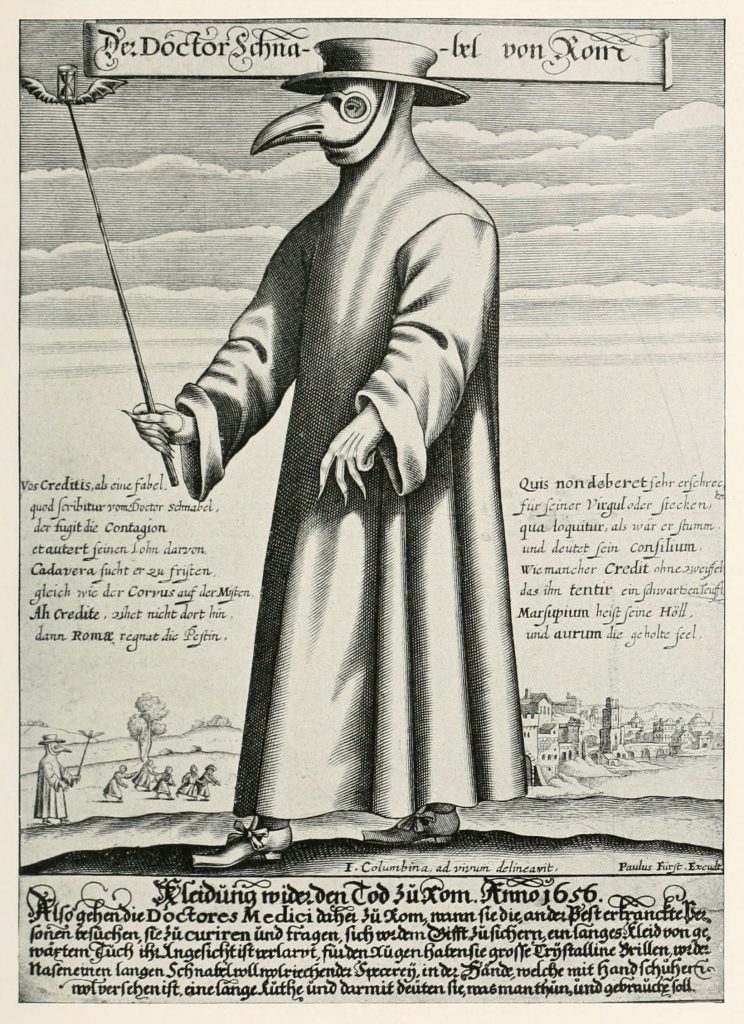
Next we look at other evidence for the character in the form of actual artifacts, including two masks exhibited in museums in Berlin and Ingolstadt, Germany.

As there are reasons to doubt the authenticity of these, we next look at evidence of plague masks associated with the island of Poveglia in the Venice Lagoon. Along the way, we learn a bit more about early measures the city took against the plague (including the invention of the concept of shipping quarantines along with coinage of the word).
We also review a bit of general information about the islands in the Venetian lagoon (including others besides Poveglia) used for the clinical isolation of victims of plague, leprosy, and the mental illness. A photo taken on Poveglia in 1899 is discussed as it may show an actual plague mask in use in the late 19th century. We also hear some snippets from the TV Show Ghost Adventures, which popularized a number of legends associated with Poveglia, including tales of asylum torture and suicide.
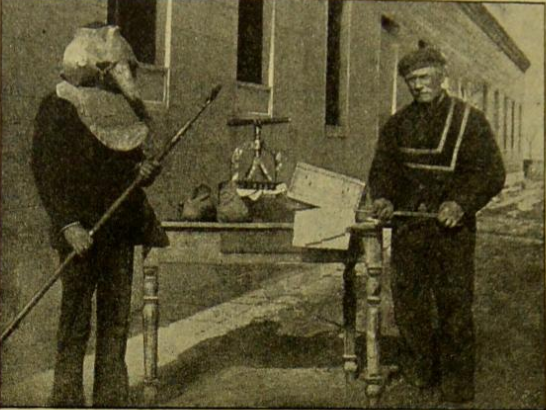
Next, we look at the first textual evidence for this plague mask and suit, in a 1682 volume attributing its invention to Charles de Lorme, royal physician to Louis XIV and the Medici Family, among others.
While the design of the mask seems to be a first with de Lorme, we also hear of some other uses of protective plague garments are documented in France and Italy around this time.
A surprising example from Basel, Switzerland provides rare evidence of particular doctor known to have worn a plague suit and mask. It’s 17th century painting of the family arms of the Zwinger family of Basel, painted for the doctor and theologian Theodor Zwinger the Younger, and depicting him in a plague mask and suit.
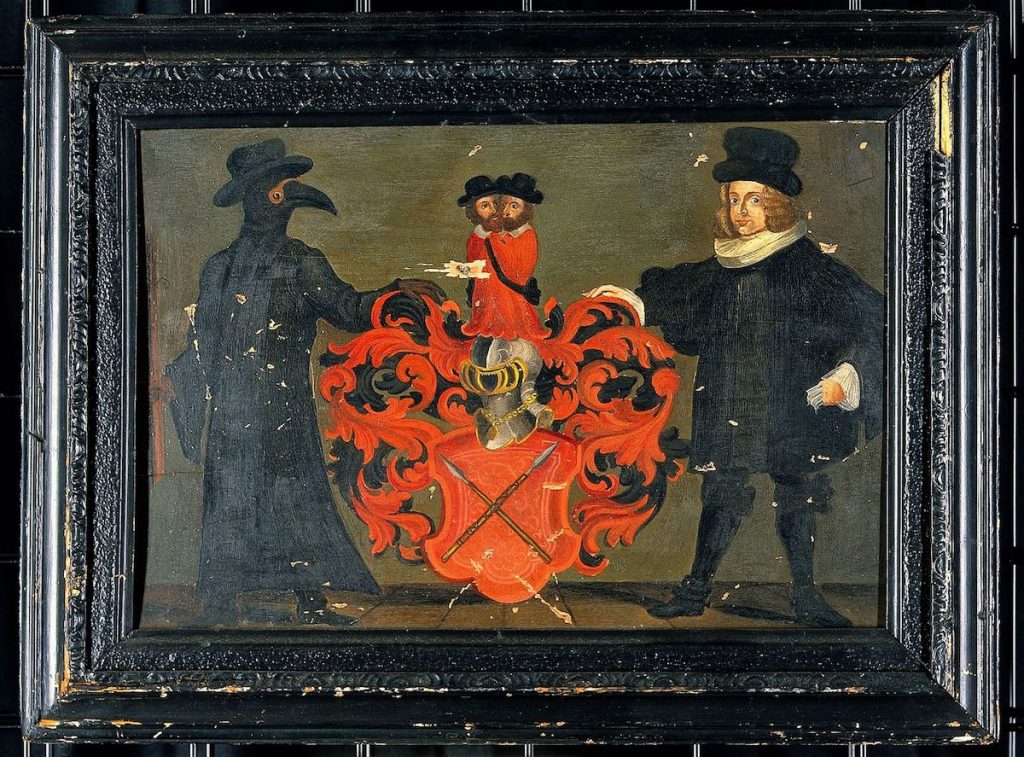
We also have a look at the symbolic use of special historic plague garments, special colors worn in France and Italy for medics working with plague victims, and the symbolic and practical function of the stick or baton held by the the plague doctor in most every historical illustration.
The Great Plague of Marseille (1721 to 1722) provides us one more name of a doctor known to have worn a plague suit and mask. His name was François Chicoyneau, and his efforts were not well received by the citizens he was assigned to serve in Marseille, as we hear.
Along the way, Mrs. Karswell provides us some contemporary accounts documenting other aspects of the Marseilles plague, the last bubonic pandemic of Europe, including novel means of disposing of plague corpses considered by the town council, a curiously relevant form of social distancing, and the basis of the legend of “Four Thieves Vinegar.”
Finally, we discuss those plague doctor masks worn in the Venetian Carnival, learning that they are a strictly modern creation not associated with the 16th-18th century commedia della’arte tradition that gives us the other masks.
We end with a strange parallel between an opera about performers in the commedia della’arte and a 1928 film starring silent horror great Lon Chaney, Sr. Included is a bit of music used to promote the film in question, Laugh Clown, Laugh.”
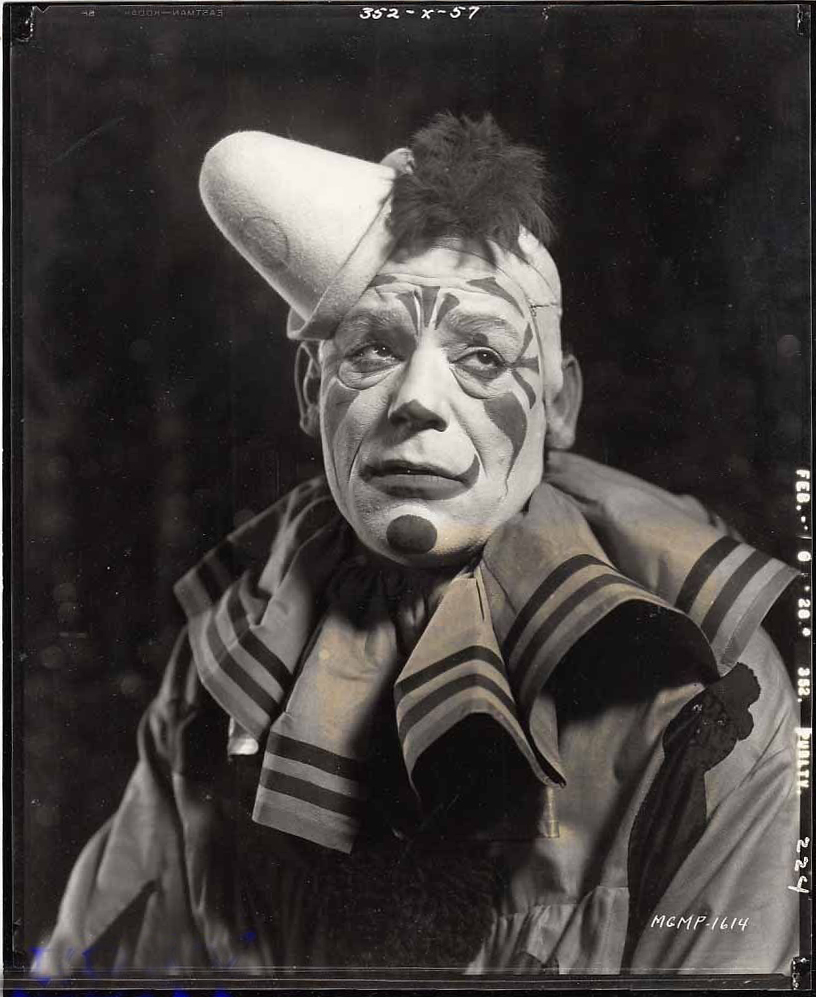
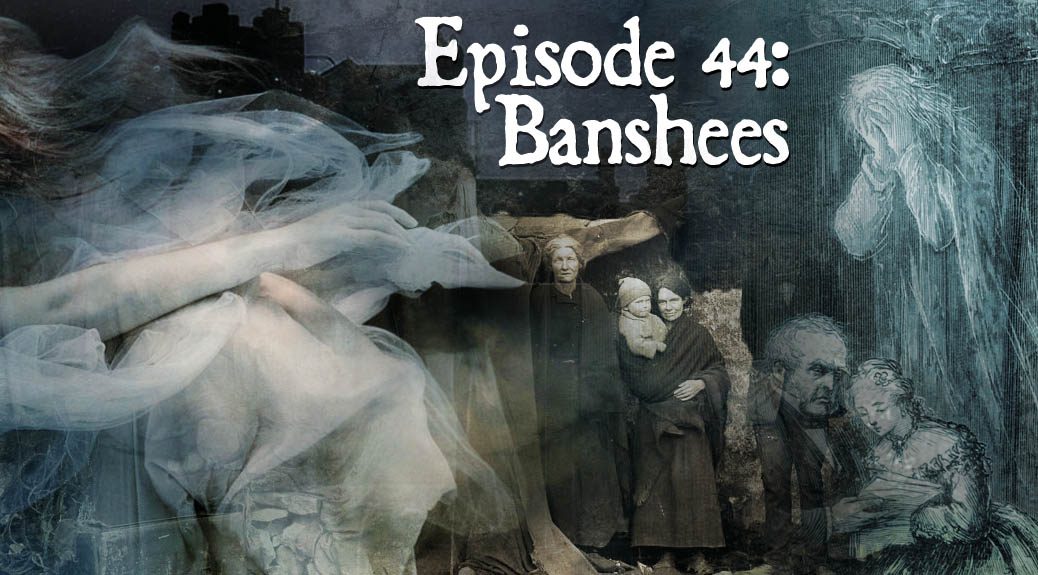
Podcast: Play in new window | Download (Duration: 44:31 — 40.8MB)
Subscribe: Apple Podcasts | Spotify | Android | Podchaser | RSS | More
Banshees are spirits of Irish folklore, who warn of impending deaths. Originally considered fairies, their Irish name, bean sídhe, means “woman of the mounds,” those mounds (sídhe) being the ancient burial mounds believed in Ireland to be the home of fairies.
The banshee’s wailing, which betokens imminent death of a blood relative, is probably based upon the wailing of Irish mourners called “keeners,” from the Irish word caoineadh, or “lament.” You can hear some snippets of traditional keeners in this segment, incliuding a 1957 field recording released by Smithsonian Folkways.
Next we look at how the banshee’s appearance and behavior derives in part from that of Irish keeners, including some odd details having to do with petticoats. Her origins in the fairy world also has often suggested that she may be small of stature. We also examine some folktales involving combs lost by or stolen from banshees, and what you should or should not do should you find one.
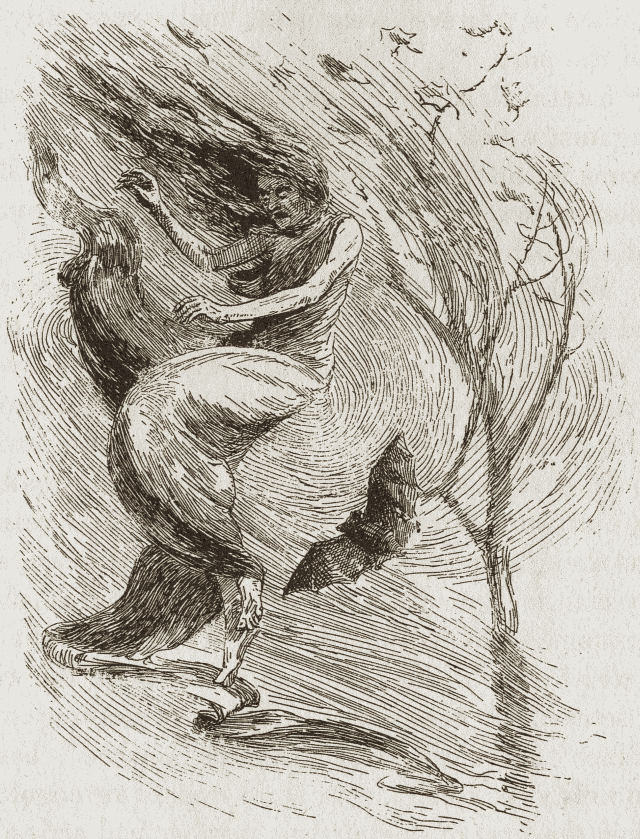
While the banshee is attached strictly to particular families, she is not bound to the Emerald Isle. We hear some accounts of her following travelers to other countries, including a surprising tale involving a party aboard an Italian yacht.
The figure, as she’s known today, receives no mention in print until the 17th century. Mrs. Karswell reads for us what is probably the earliest account, retelling an incident experienced by Lady and Sir Richard Fanshawe, an English ambassador and his wife visiting Ireland.
This account also introduces the notion that a banshee may not originate in the fairy world, but may also be a vengeful ghost. We hear another tale in this mode associated with Dunluce Castle in County Antrim, a location known for its “banshee room,” a feature duplicated in Shane’s Castle, about an hour to the south. Both of these castle banshees are sometimes called “the red sisters,” so named for the color of their hair.
After a brief side trip to make note of figures similar to the banshee in Scotland (the caoineag) and Wales, the cyhyraeth and gwrach y rhibyn, we turn to older figures of the fairy realm regarded as banshees, but rather different from the figure born in the Early Modern Period.
The first of these is Clíodna, who was known as the queen of the banshees of southern Ireland, particularly the province of Munster. Unlike the modern banshee, a solitary figure who does little more than wail and make those well-timed appearances, Clíodna engages in romantic affairs, including a romantic rivalry with her banshee sister Aoibhell, a matter culminating in a magical battle with both transformed into cats.
Aoibhell also appears in an important story about Brian Boru, founder of the O’Brian Dynasty, whose army defeats an alliance of Vikings and Irish lords fought at the Battle of Clontarf, near Dublin in 1014. While Boru’s forces are victorious, he and his son are visited by Aoibhell, who heralds their deaths not with a wail, but music played on her harp from the fairy world. We hear a similar story about the Irish hero and demi-god Cúchulainn encoutering Aoibhell as a death omen.
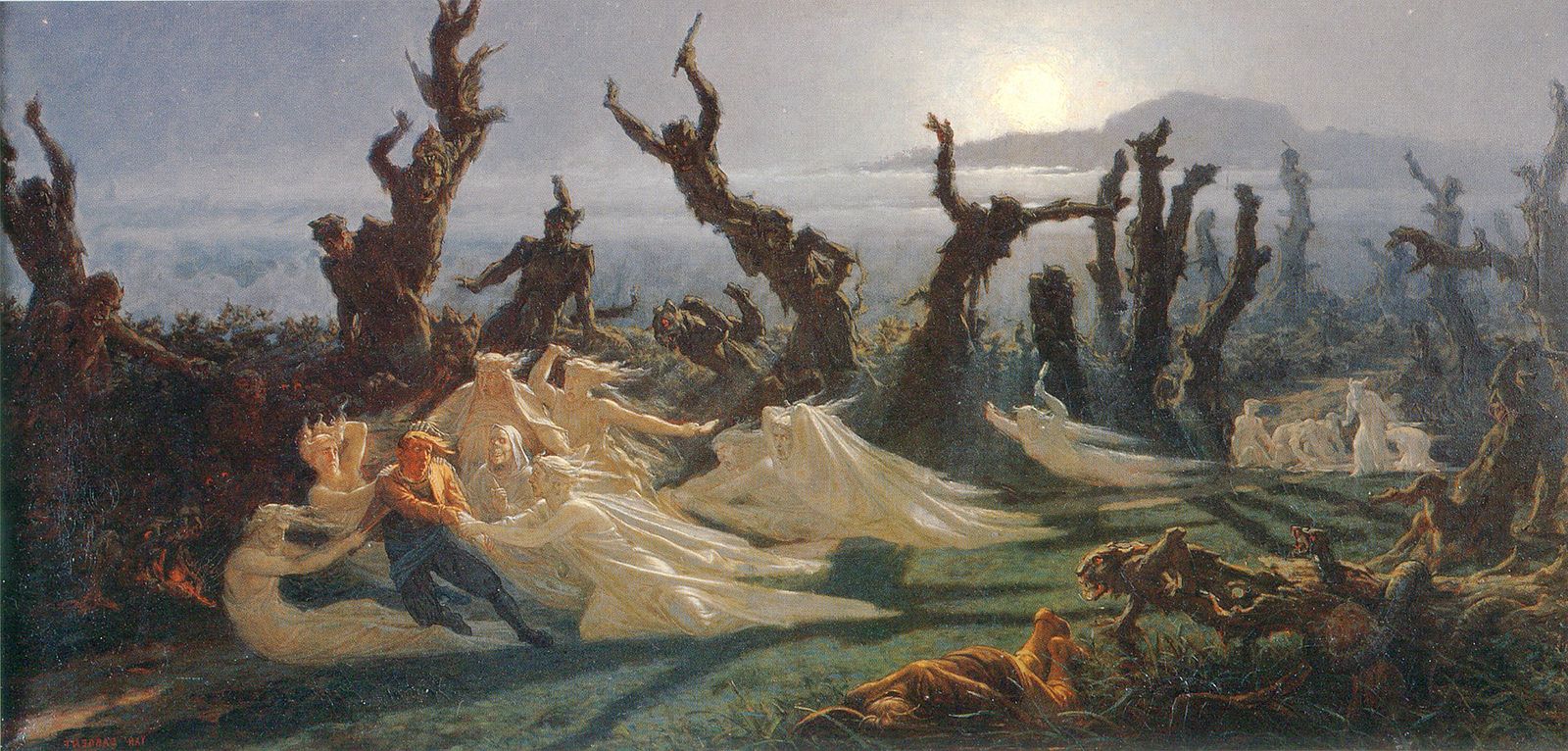
Cúchulainn also encounters a banshee-like figure of the type folklorists call, “the Washer at the Ford,” or in Celtic regions elsewhere, like Celtic Britanny, “the Midnight Washer.” The figures appear at lonely bodies of water washing bloody shrouds, or often armor, as they are particularly inclined to predict the deaths of soldiers and armies. We hear a particularly splendid account of one such figure from the 12th-century Triumphs of Torlough — one, which in its generous use of horrific adjectives sounds as if it were written by H.P. Lovecraft.
The episode ends with a quick look at a couple cinematic bamshees, including one which has earned a place in the nightmares of children encountering it in the 1950s-70s. The two movies we hear bits of are Damned by Dawn and Darby O’Gill and the Little People.
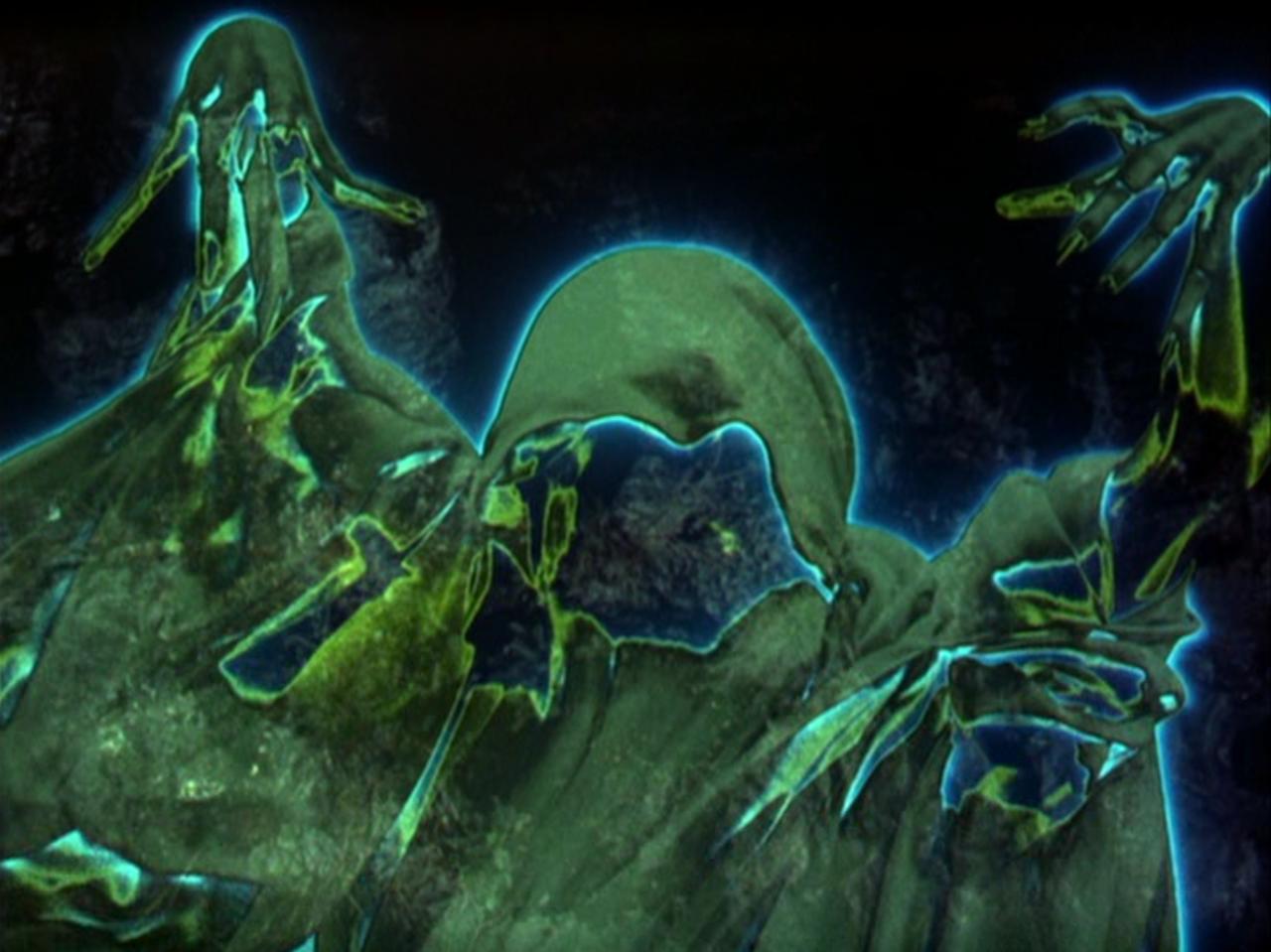
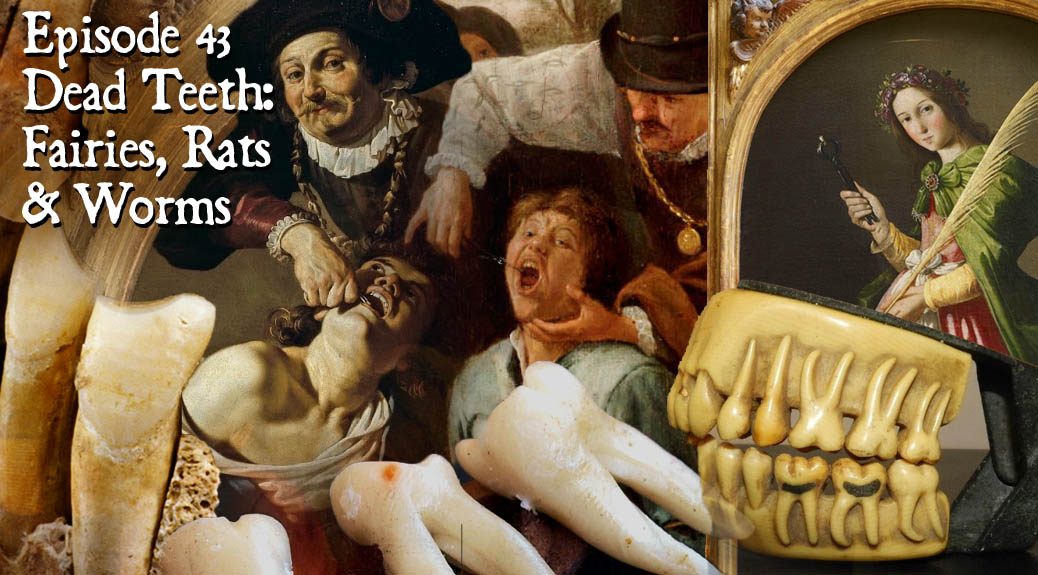
Podcast: Play in new window | Download (Duration: 42:06 — 48.2MB)
Subscribe: Apple Podcasts | Spotify | Android | Podchaser | RSS | More
Explore the folklore of the Tooth Fairy and teeth, particularly dead teeth — those lost by children or adults, and those removed from skulls.
We open with a brief look at the Tooth Fairy as inspiration for horror films, hearing a bit about (and a montage of clips from) Darkness Falls (2003), The Tooth Fairy (2006), The Haunting of Helena (2013), and Tooth Fairy (2019). Though none of these films were particularly successful with critics or audiences, there would seem to be some worthwhile horror inherent in the childhood ritual — psychological vulnerabilities related to the child’s trust of parents, nighttime intruders, and the death of a body part. We also hear a bit about the SyFy Channel’s 2016 show Candle Cove (Season 1 of Channel Zero), which also featured a Tooth- Fairy-inspired monster. We hear a creepy snippet of a secret 1970s kid show featured in Candle Cove as a tool of and deadly mind manipulation.

Surprisingly perhaps, the Tooth Fairy known by Americans has little in way of direct historical connection to older, European customs. It first appears in print no earlier than 1908. We have a look at some of these earliest references, including an article with an unusual connection to a sensational murder case as well as some references to curious also-ran fairy characters that were once used in American parenting. (At the top of this section we hear a clip from Tom Glazer’s 1953 song, “Willie Had a Little Tooth.”)
Often suggested as an ancient precedent for Tooth-Fairy customs is the Norse and Icelandic concept of the tannfé (“tooth gift” or “tooth-fee”) mentioned all the way back in the medieval Eddas. A quick look into the matter, however, reveals some major differences: there is no magical fairy or transformation of the lost tooth into money, nor was the gift given on the occasion of losing a tooth, but when the child cuts his first tooth.
A more direct precedent can be found in widespread customs that have a rat or mouse taking away the child’s lost tooth or that tooth being ritualistically offered to a mouse. The most prominent representation of this is probably in Spanish-speaking countries, where El Ratón Perez, Perez the Mouse, plays the role, but there are also rats and mice exchanging teeth in Italy, Germany, Scotland, Slovenia, Lithuania and France, and Hungary. In many 0f these countries, it’s not money provided in exchange for the child’s tooth but the blessing of stronger adult tooth.
We then switch gears to look at some alternative customs for the disposition of the shed milk tooth (also those lost by adults). One particularly popular in Britain is to cast the tooth into a fire. One reason for doing this is to prevent the tooth from being used in witchcraft spells against the person whose it. Mrs. Karswell reads us some passages on this along with a couple on the teeth from graveyard skulls used by the merely superstitious who are not practitioners of the craft.
Not so dissimilar to witchcraft was medieval dentistry. We hear several horrifying treatments from historic texts along with a bit on the presumptive source of dental problems in this period: the dreaded tooth worm.
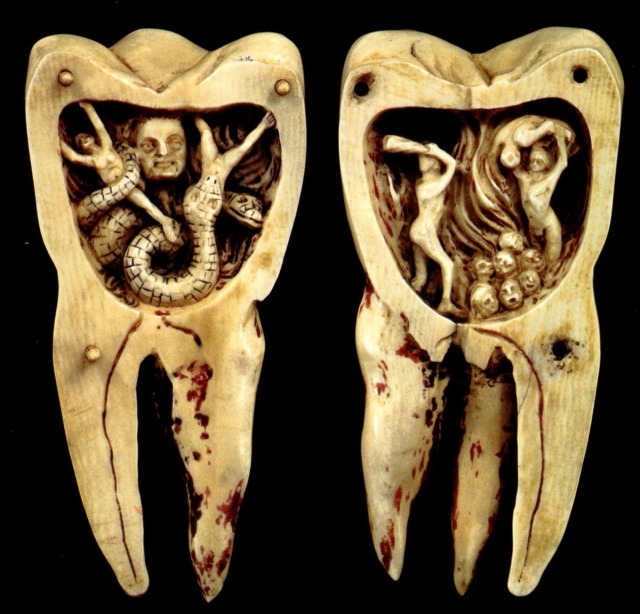
If neither dentistry or witchcraft proved helpful there was always religion. The saint to whom prayers would be directed here would be St. Apollonia, one of group of virgins put to death during an anti-Christian uprising in 2nd-century Alexandria. Her connection to this concern arises from her teeth being knocked out during her martyrdom. We also hear a passage describing the mania for carrying alleged teeth of the saint in Britain during the time of Henry VI.
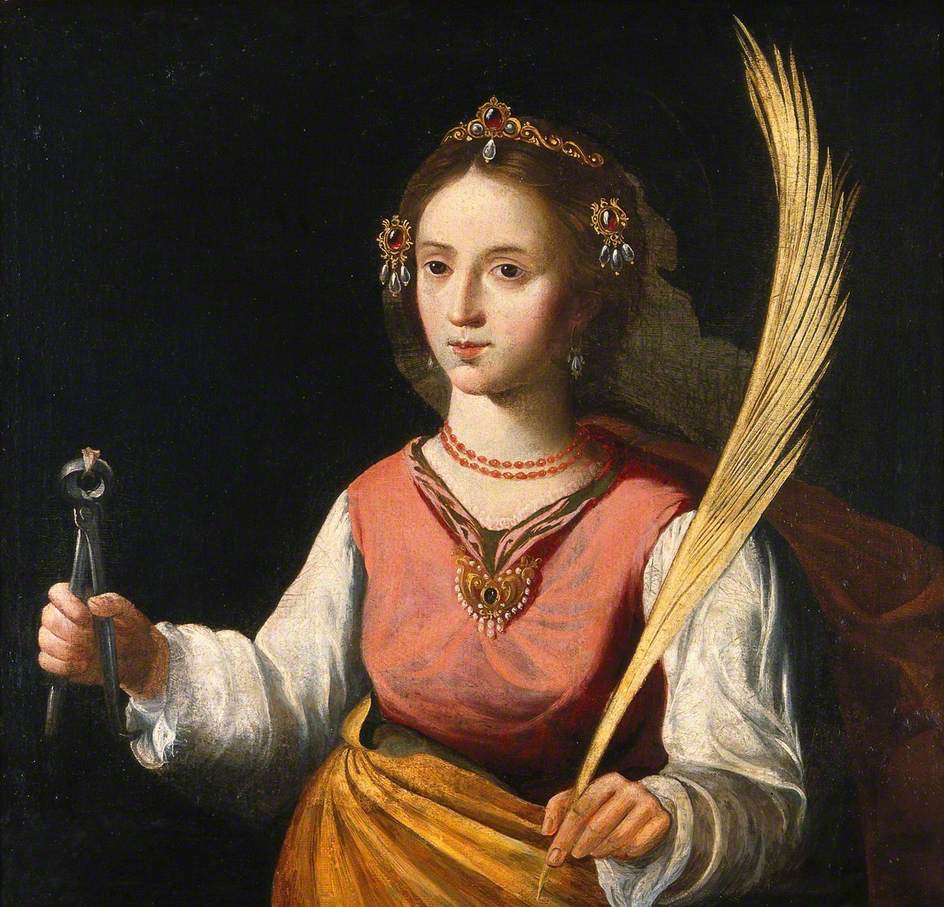
Rounding out our exploration religion and human teeth is brief look at the discovery in Mexico City of human teeth discovered in an 18th-century life-size wooden sculpture dubbed “The Lord of Patience.”
We follow this with a look a more pragmatic use of human teeeth, namely “Waterloo Teeth,” or the teeth of fallen soldiers and others (including those obtained by grave-robbers) once used to make dentures.
Our episode closes with topic of teeth and the Final Judgement, namely, the pre-Reformation Christian teaching that held that lost teeth must be saved in order to accompany the body to its destiny after death. A bizarre news story from 2014 considers the horrifying consequences in which this superstition is mocked.
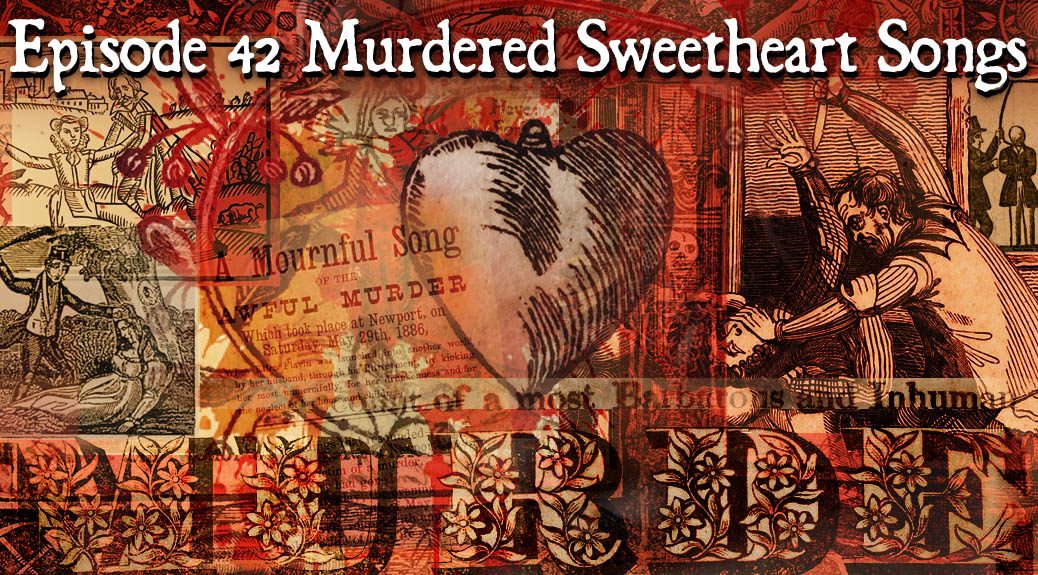
Podcast: Play in new window | Download (Duration: 50:29 — 57.8MB)
Subscribe: Apple Podcasts | Spotify | Android | Podchaser | RSS | More
As a special Valentine’s episode, we present collection of folk songs known as “sweetheart murder ballads.” We begin with two newer songs dating to the 19th century, “On the Banks of the Ohio” and “Down in the Willow Garden.” While considered American songs and first documented in Appalachia, these ballads appear to borrow elements from older European songs.
One of the most widely known murder ballads, “On the Banks of the Ohio,” like most of songs in this program, was first recorded in America in the 1920s. We hear a snippet of that early (1927) recording by Red Patterson’s Piedmont Log Rollers and a longer cut narrating the murder itself from a 1969 recording by Porter Waggoner.
While “Banks of the Ohio” has the murderer stabbing his love and disposing of her body in the river, “Down in the Willow Garden,” throws in some poisoning to boot. One of the versions of this song we hear excerpted is from an excellent 1956 album by the Kossoy Sisters, Bowling Green, one we’ve previously sampled in our Butcher Lore episode for which the Kossoys sang about the butchering of a giant ram (“The Darby Ram”). We hear a snippet of the first recording of this song (also from 1927) by G. B. Grayson and Henry Whitter. This early version takes as its title, the victim’s name “Rose Conley,” an Irish family name, suggesting that the song has obscure roots in that country.
The Scottish song “The Banks of Red Roses” shares a similarity with “Willow Garden” in its garden setting. Both highlighting the role a beautiful but remote environment can play in a deadly seduction. We hear a 1962 version by the Scottish singer Jean Redpath, along with snippets by other artists.
Our next song, “The Lone Green Valley” or “The Jealous Lover” takes us back to America with an early recording from 1926 by Vernon Dalhart. Following a similar narrative to our other songs, this song was the subject of a painting by American muralist Thomas Hart Benton. We also hear a strange bit of gossip related to Benton’s interest in folk music involving Jackson Pollack, of all people.
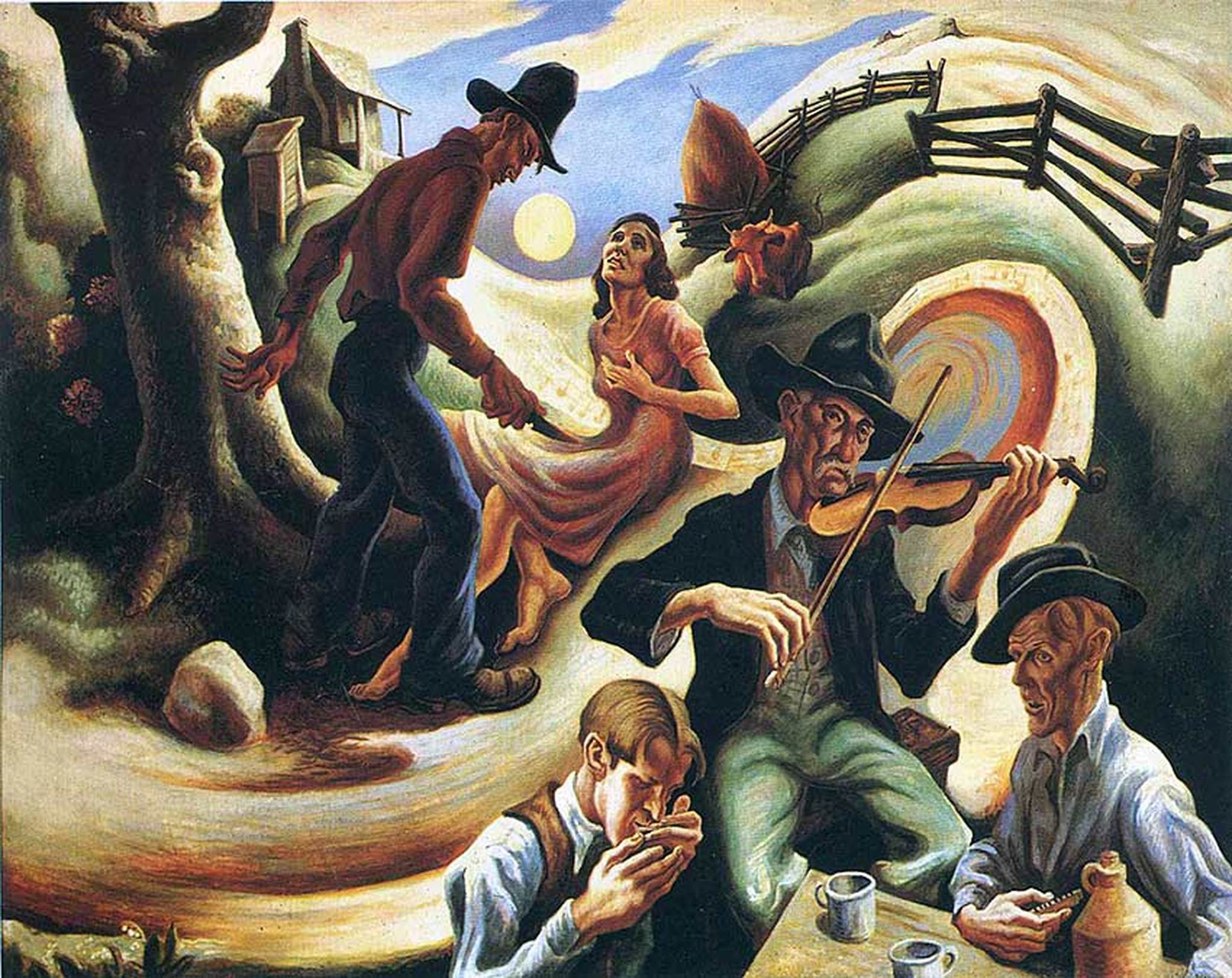
Our next song, “Knoxville Girl,” is an American update of a British and Irish song with roots going back to around 1700. We begin with a version by The Louvin Brothers from 1956 and work our way to earlier songs from Great Britain where the song goes by “The Oxford Girl,” or in Ireland, “The Wexford Girl,” along with other names and localities, including “Ickfield Town,” the title of a 2005 version we hear from John Kirkpatrick. The story in these is similar to “Banks of the Ohio” and “Willow Garden,” but with a bludgeoning substituting for a stabbing. The song also adds a scene depicting the murderer returning home after his crime to night of guilt-ridden tossing in bed surrounded by imaginary hellfire. The killer is also confronted upon his return by his mother, who notices blood on his clothing, which the killer excuses as the result of a nosebleed.
This odd details of the nosebleed can be traced, along with other elements of the song, to a 1685 broadsheet entitled “The Bloody Miller,” which makes the killer a miller’s apprentice (while other songs employ him as a butcher’s apprentice.) In the broadsheet, the nosebleed does not occur upon the killer’s return home, but in court as his guilty verdict is handed down, and is presented as a supernatural omen confirming his guilt.
This notion of a supernatural disclosure of the guilty killer brings us to another group of lesser known murder songs, including the 19th-century Irish ballad “The Old Oak Tree,” a particularly gory tale, which includes not only a murder but the graphically described disinterment of a corpse and a suicide.
Our next song, a 19th-century Scottish ballad “Young Benjie,” gives us a different kind of murder (being thrown into a waterfall) and has the ghost of the murdered lover appearing at her own wake to demand a very particular and gruesome form of punishment for her killer. We hear a bit of 2012 version of the song by Rosaleen Gregory.
Our last song was popularized by a 1996 version by Nick Cave with P.J. Harvery: “Henry Lee.” Older versions of the song go by other names including “Love Henry,” “Earl Richard,” “Young Hunting,” and “The False Lady.” This one is also from Scotland of the early 19th century. The Appalachian adaptation (the version sung by Nick Cave) omits a more detailed opening describing Henry Lee (or Richard) as an early come in from hunting as well as a more elaborate role played by the bird witness — one which involves the recovery of the victim’s body and identification of the killer by supernatural means. There is also a final verse about the cruel justice served upon the killer. Along the way we learn of a quite peculiar superstition related to the bodies of the drowned and hear a snippet of an unusual 2008 cover of the song by Jodie Holland.
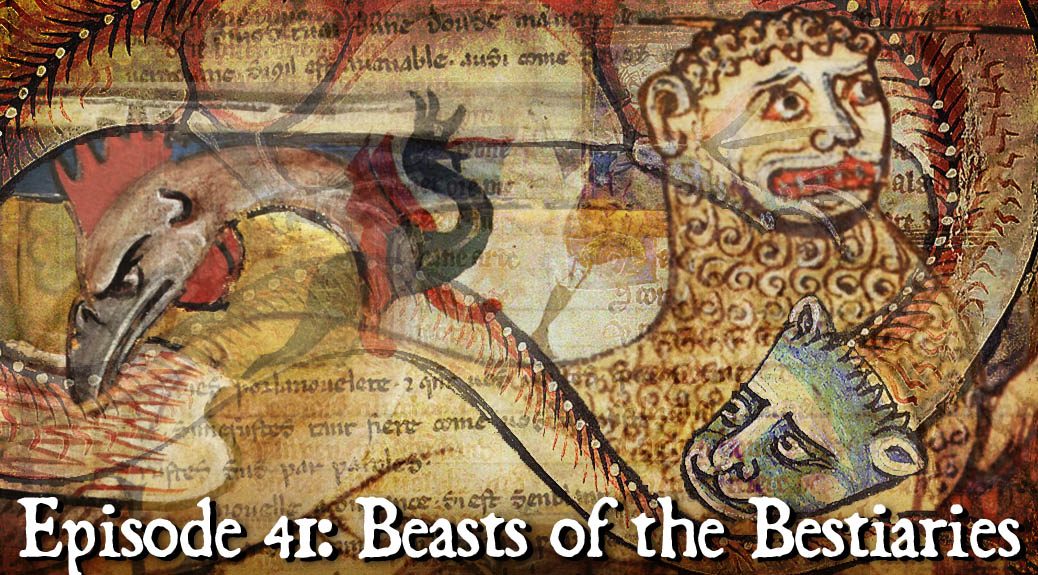
Podcast: Play in new window | Download (Duration: 43:46 — 50.1MB)
Subscribe: Apple Podcasts | Spotify | Android | Podchaser | RSS | More
The bestiaries of the Middle Ages and Renaissance were books describing animals (some recognizable and others fantastic) in terms borrowed from classical texts and framed by Christian teachings. In this episode, we examine a few of the stranger beasts and strange customs and beliefs associated with them.
Here’s a brief look at the animals we’ll be examing (“brief” because I’m rushing to get this episode out on the last day of the month).
Our first is the bonocan, a bull-like creature either from Macedonia or somewhere in Asia, depending on your source. Its memorable trait is the very peculiar means of self-defense it employs.
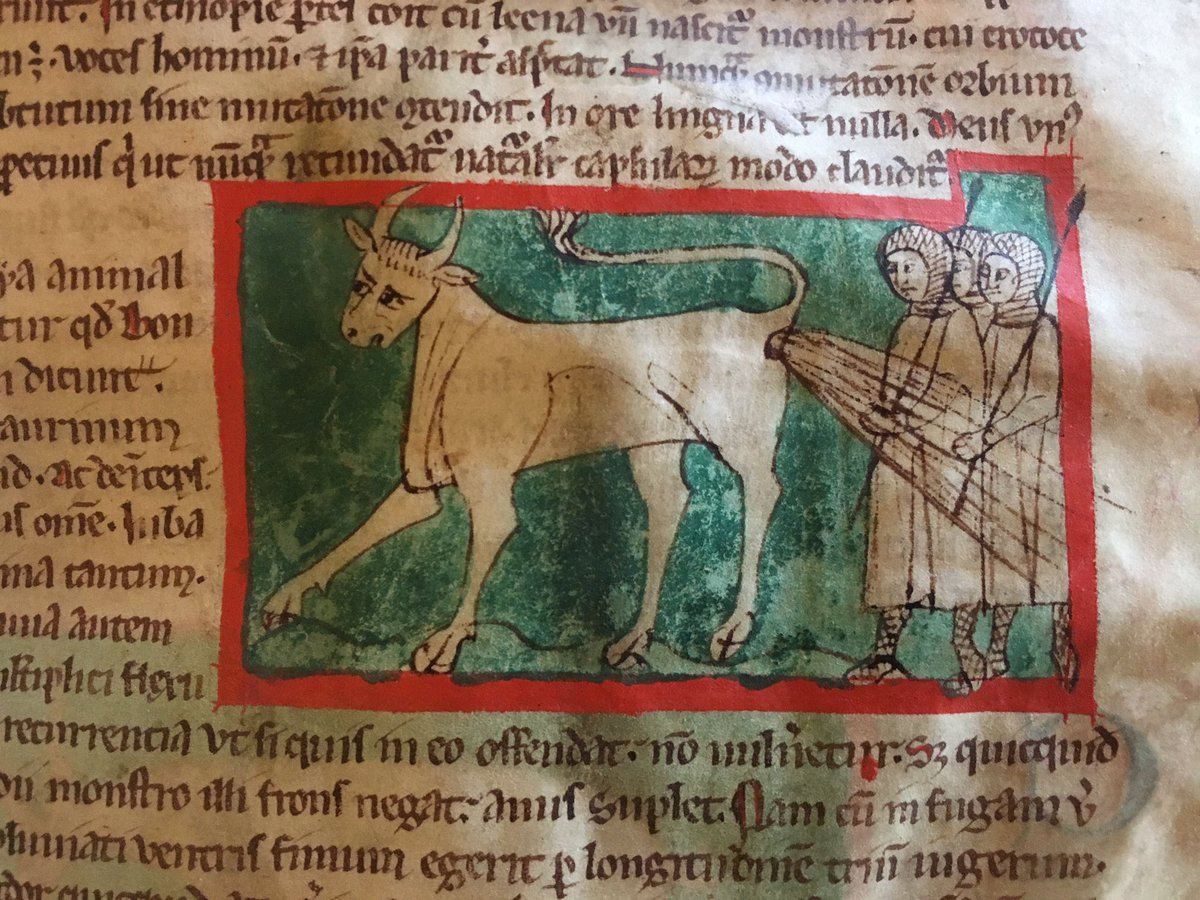
Next, the manticore, a tiger-like beast from India that comes with a few extra bells and whistles like a tail that shoots quills. In the later Middle Ages it became muddled with the mantyger, a creature with a tiger’s body and man’s head.
The leucrota and the crocota were similar or identical creatures with terrifying ear-to-ear mouths equipped with a bony ridge in place of teeth. Their tendency to dig up corpses and vocalize like humans suggests they were inspired by the hyena.
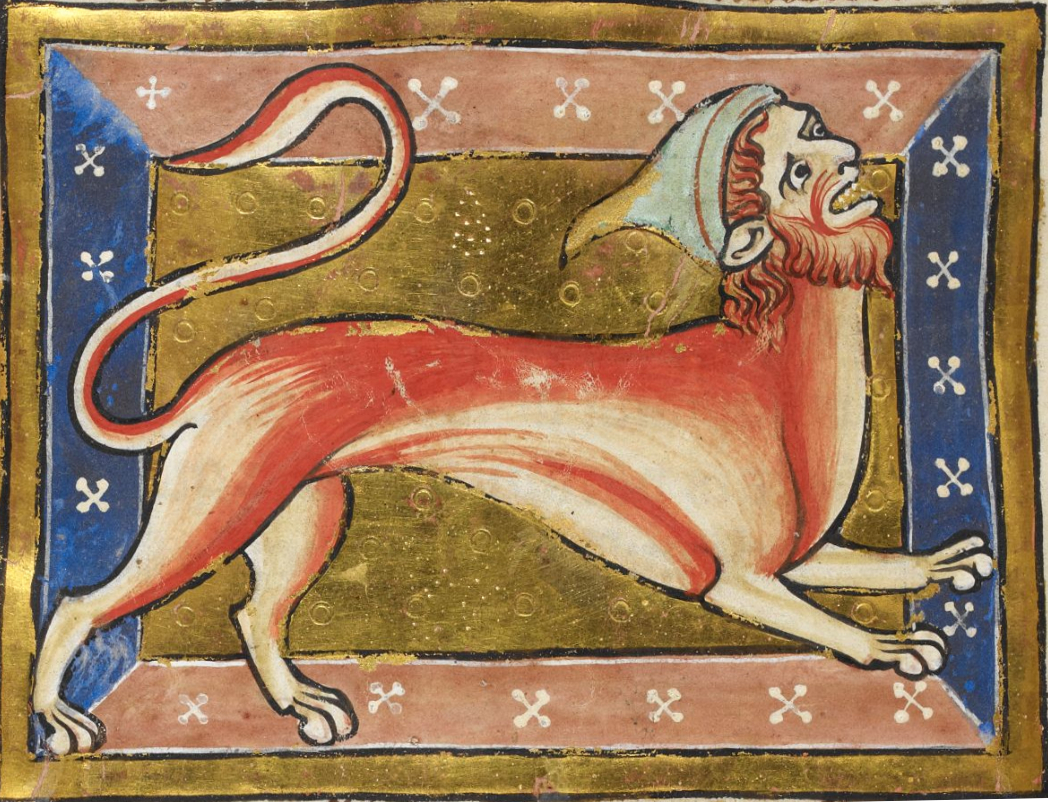
The basilisk is a sort of serpent, whose name comes from the Greek for “little king.” It was small (originally) but deadly. Not only was it venomous, but its breath, and even its glance could kill. Mrs. Karswell relates three legends of basilisks as threats to medieval towns.
Vienna’s basilisk tale involves an baker’s apprentice who must defeat the monster residing in the depths of a well in order to win the hand of his beloved.
The legendary basilisk of Warsaw was discovered haunting the cellar of a ruined building and was so fearsome only a convict facing death dared face it. We also look at the basilisk as the heraldic symbol of Basel, a city which destroyed the basilisk that menaced it while still in the egg (in one of the strangest incidents in the history of man’s relationship with poultry).
We also look at a tale from Cumbria, England, in which a cockatrice — a creature similar to the basilisk but with the head of a rooster — menaces a church.
Our episode closes with a look at the salamander of the bestiaries, a creature produces a deadly poison that vies with that of the basilisk, and one believed to withstand fire. While the latter is purely fictitous (though believed in some places up into the 19th century), the former is based on an actual poison (salamandrine) exuded through the skin of certain species. We’ll examine how this poison relates to a peculiar urban legend originating in Slovenia and hear some accounts of Victorian “human salamanders,” that is, sideshow performers said to be impervious to fire.
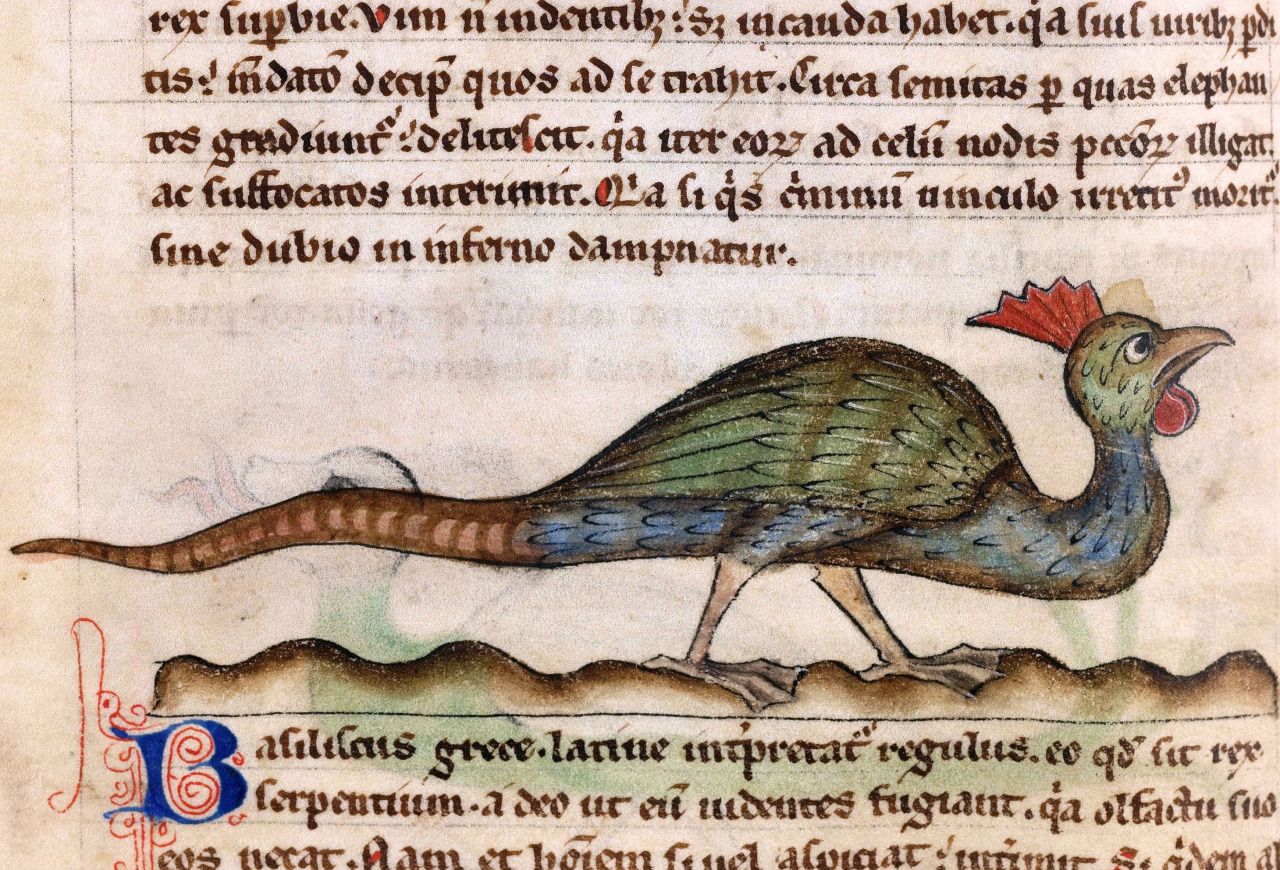
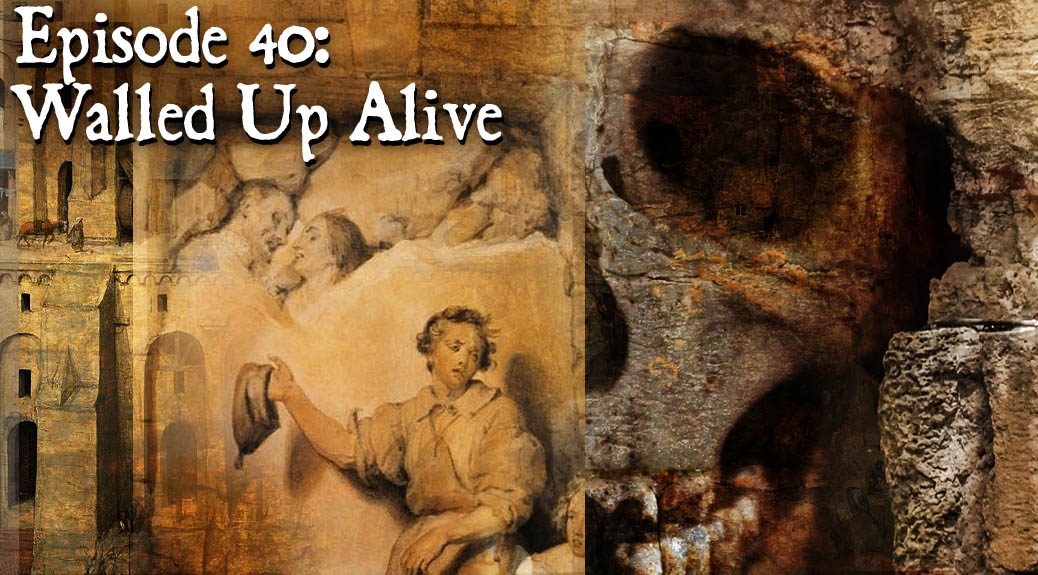
Podcast: Play in new window | Download (Duration: 43:26 — 49.7MB)
Subscribe: Apple Podcasts | Spotify | Android | Podchaser | RSS | More
Walling up a living victim, or immurement, has been used both as a punishment and for darker, magical purposes. In this episode, we detangle the history from the folklore of this grisly act.
We begin with an instance of immurement from Edgar Allan Poe’s 1846 story “The Cask of Amontillado” (including a clip from a dramatization in 1954 radio show, Hall of Fantasy) and also get a glimpse of director Roger Corman’s freewheeling use of this element from Poe his 1962 anthology film, Tales of Terror, as well as 1961’s The Pit and the Pendulum.
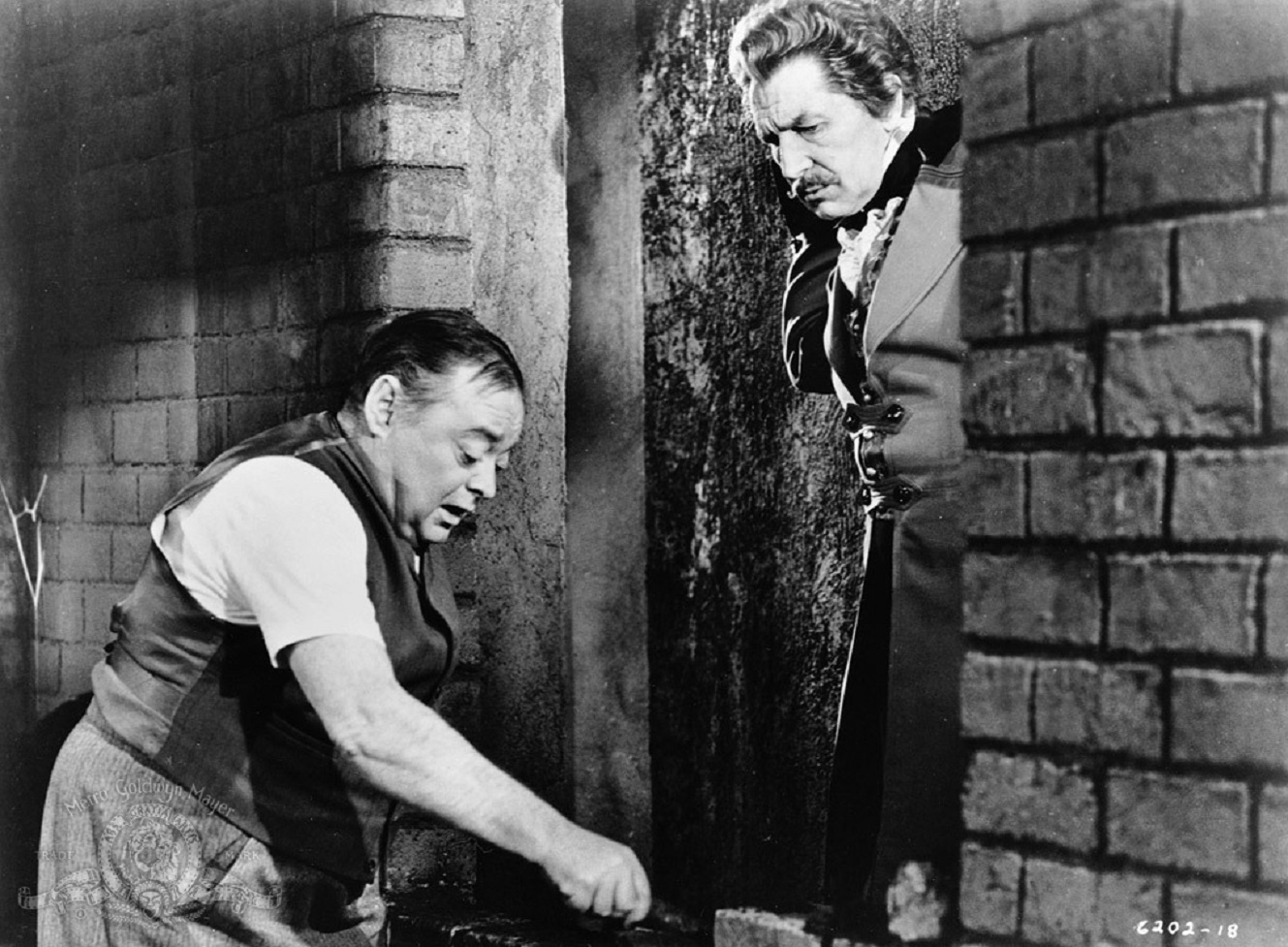
Poe’s interest in immurement is typical of Gothic writers and their fascination with crypt-like spaces, often including the cells and catacombs within Catholic churches and monastic communities. Tales of immured nuns, abbots, and abbesses are particularly common, with the deed understood most typically as a punishment for unchastity but also occasionally for other outrageous deeds or teachings (including a case of dabbling in the black arts). We have a look at some cases in which actual immured skeletons were said to have been discovered in religious communities and then consider the lore explaining their presence. We also look at ways in which writers like Sir Walter Scott and H. Rider Haggard blurred the line between historical and literary stories.

It’s likely that tales of nuns immured for unchastity were particularly prevalent as they echo the fate of Rome’s Vestal Virgins who failed to protect their virginity. We hear some details of immurements, not only from ancient Rome, but also Greece as well as a particularly gruesome account read by Mrs. Karswell describing an ancient Assyrian revenge spree featuring immurement.
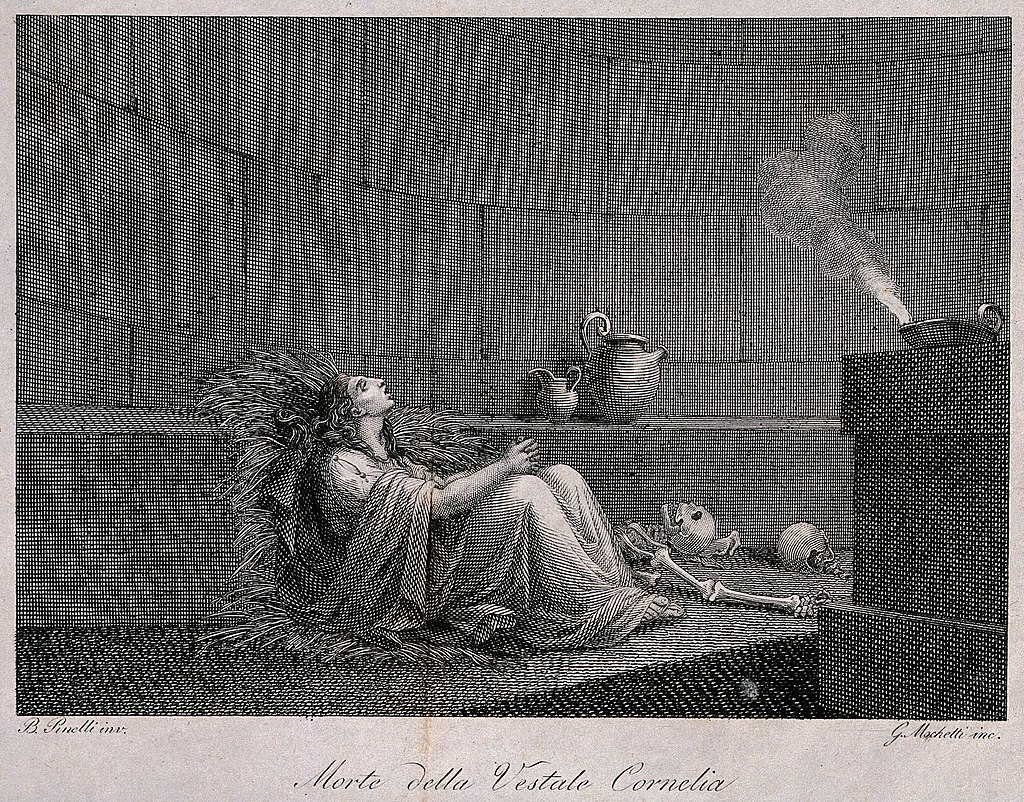
Medieval accounts of immurement we look at include the Christian legend of The Seven Sleepers of Ephesus and one recounted in Dante’s Divine Comedy, that of Count Ugolino della Gherardesca of Pisa (and his children/grandchildren, who are involved in a particularly grisly way).
Our next segment looks at punitive immurement from a cluster of legends in Scandinavia and the Baltic states. We begin with a story from the Swedish island of Gotland, that of the Jungfrutornet (“maiden’s tower”) in the town of Visby. The tower’s name is taken from the story of a maiden, who falls in love with a spy from Denmark, who uses her to obtain keys to the city gate in preparation for a devastating invasion. The maiden’s punishment for betraying her town is, as you would have guessed, immurement.
We hear a similar story from Finland, which serves as the basis of the song (from which we hear a clip) Balladi Olavinlinnasta or the ballad of Olaf’s Castle, and also a tale from a castle in Haapsalu, Estonia, said to be haunted by the maiden immured there. Then we look at a church in the Estonian town of Põlva, where a particularly devout maiden was said to have allowed herself to be interred in a position of kneeling devotion as a sort of religious talisman forever protecting the church.
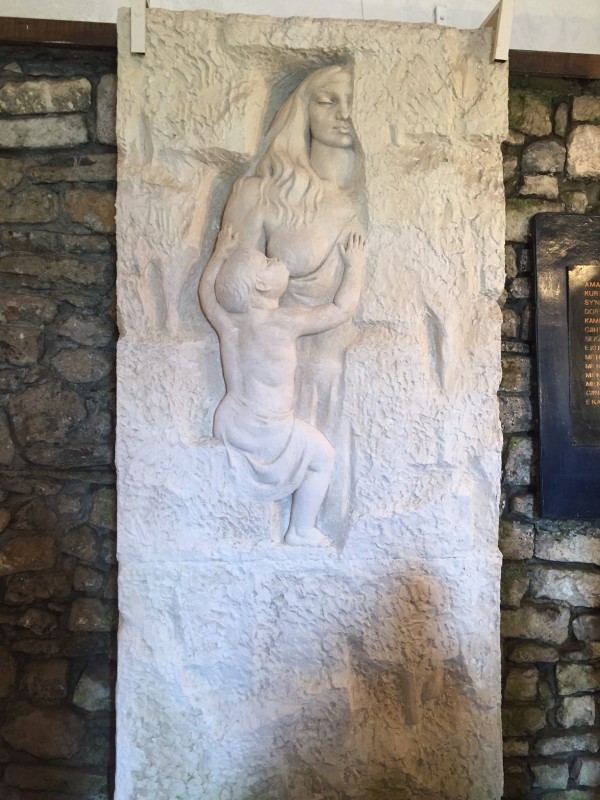
This notion of self-sacrificing immurement in a Christian context figures into the bizarre legend recounted of the 6th-century Irish saint Columba and his companion Odran, who allowed himself to be entombed in the foundation of a church on the Scottish island of Iona.
Our last segment looks at further stories of living humans entombed in buildings and other structures in what’s called a “foundation sacrifice.” A cluster of tragic legends and ballads from southeastern Europe tell similar stories of women immured in structures by their husbands who work as stonemasons. We hear these tales illustrated by a clip from the Hungarian ballad Kőműves Kelemen (“Kelemen the Stonemason”) as well as a bit of the soundtrack from the 1985 film The Legend of Suram Fortress by Sergei Parajanov — it’s based on a Georgian folk tale, so geographically close, though not quite one of the stonemasons-who-wall-up-their-wives genre. But it’s a lovely film I just wanted to include.
We then move west in Europe to hear some stories of foundation sacrifices collected largely in Germany. These include ancient sacrifices of children to the security of city walls, castles, and bridges, including a panic around a child sacrifice presumed necessary to a railroad bridge constructed near the town of Halle as late as the 1840s.
We end with a look at “church grims,” protective spirits of animals buried in church foundations (or churchyards) in Scandinavia and England, with lambs being preferred in the former and dogs in the latter — providing a connection to England’s black dog mythology.
And there’s one last story, much more modern, a 2018 news story from Houston Texas.